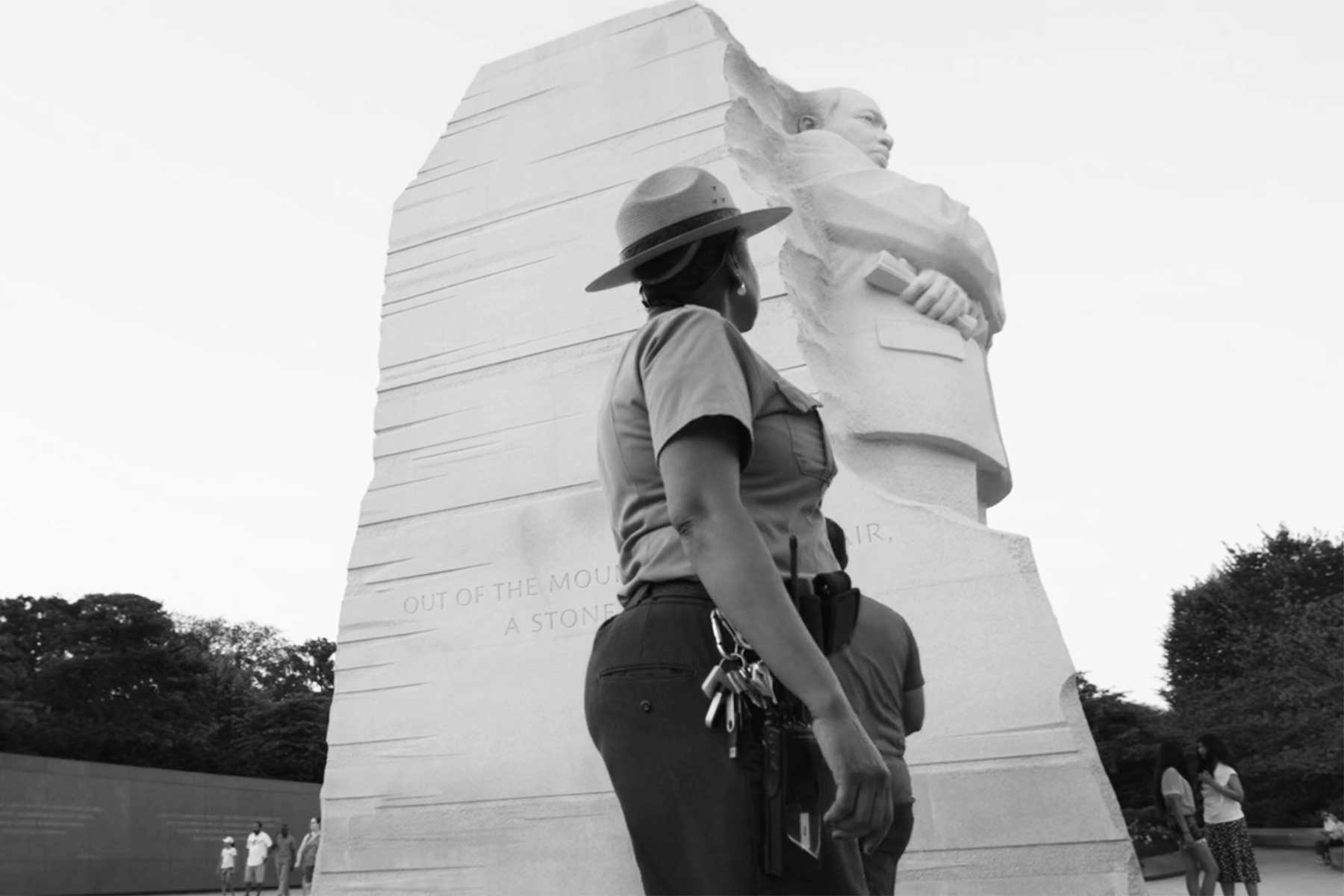
Article Overview: Best Black History Sites, Best Black History National Parks
More Than Just Parks is proud to present our list of the 20 Best Black History Sites In America for you to visit.
As a retired history teacher who now spends much of his time researching and writing articles for More Than Just Parks, I’m going to share some of the interesting stories associated with each of these amazing places.
We’ve got historic conflicts, courageous people, fascinating museums, pivotal moments, incredible events and so much more.
Watch the “Twenty & Odd” Film Featuring Many of These Sites
In fact, More Than Just Parks helped to film and produce this incredible NPS film which covered some of the important sites included in this article.
Best Black History Sites
Top 20 Best Black History National Parks
#20. 1921 Black Wall Street Memorial
Location: Tulsa, Oklahoma
We begin our countdown of the 20 Best Black History Sites In America for you to visit with the 1921 Black Wall Street Memorial.
As a retired history teacher, I’m truly amazed that this important chapter in our nation’s history has largely been ignored for so many years. It’s an incredibly powerful story and one that I’m honored to share.
At the turn of the 20th century, African Americans founded and developed the Greenwood District in Tulsa, Oklahoma. Built on what had formerly been Indian Territory, this community grew and flourished as a Black economic and cultural mecca—until May 31, 1921.
As African-Americans began to share in what we call the “American Dream,” Booker T. Washington dubbed this community “Black Wall Street.”
Unfortunately, all of that changed on May 31, 1921.

Tulsa Race Massacre
It was on this infamous date that a white mob began a rampage through some 35 square blocks, decimating the community known proudly as “Black Wall Street.”
It would become known as the Tulsa Race Massacre.
Armed rioters, many of whom had been deputized by local police, looted and burned down businesses, homes, schools, churches, a hospital, hotel, public library, newspaper offices and more.
The official death toll resulting from this carnage was 36, but historians put the actual number closer to 300.
The incident stands as one most horrific acts of racial violence, and domestic terrorism, ever committed on American soil.
If you’re interesting in learning more about the tragic events which took place in Tulsa in 1921 then I recommend two books. One is Tulsa, 1921: Reporting a Massacre by Randy Krehbiel. The other is Burning by Tim Madigan.
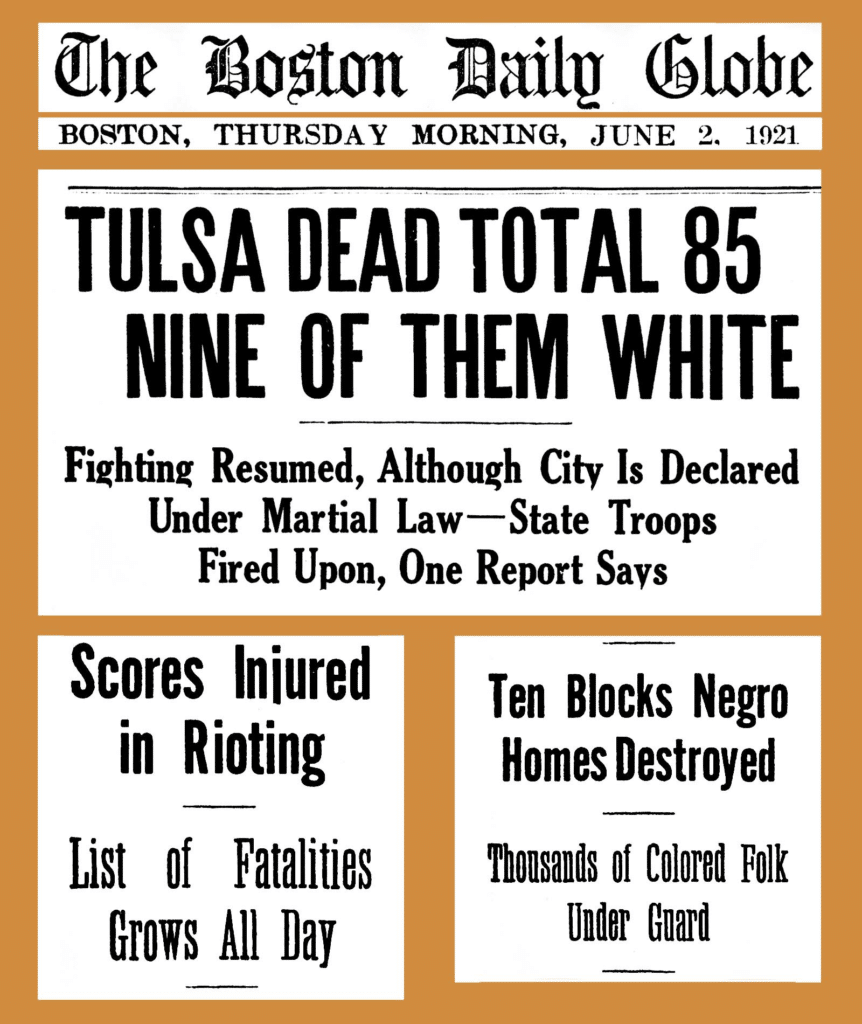
During the course of eighteen terrible hours on May 31 and June 1, 1921, more than one thousand homes and businesses were destroyed, while credible estimates of deaths range from fifty to three hundred.
-Oklahoma Historical Society
By the time the violence ended, the city had been placed under martial law, thousands of Tulsans were being held under armed guard, and the state’s second-largest African American community had been burned to the ground.
Visit The 1921 Black Wall Street Memorial
The renovated 1921 Black Wall Street Memorial was unveiled in 2021.
The memorial is dedicated to the massacre victims and is located in the Historic Greenwood District, where white rioters killed and destroyed.
In addition to seeing the memorial itself, there are two excellent sites worth visiting.
- Greenwood Rising is a new Black Wall Street History Museum. It’s free to visit for now, but you’ll need to make a reservation to visit.
- Greenwood Cultural Center is free but only open weekdays. The pictorial exhibits and survivors gallery testimonials are worth a look.
A tour of Greenwood will help you understand the geography of neighborhood, how it prospered, why it was attacked, how it was rebuilt, and why it was later dismantled.
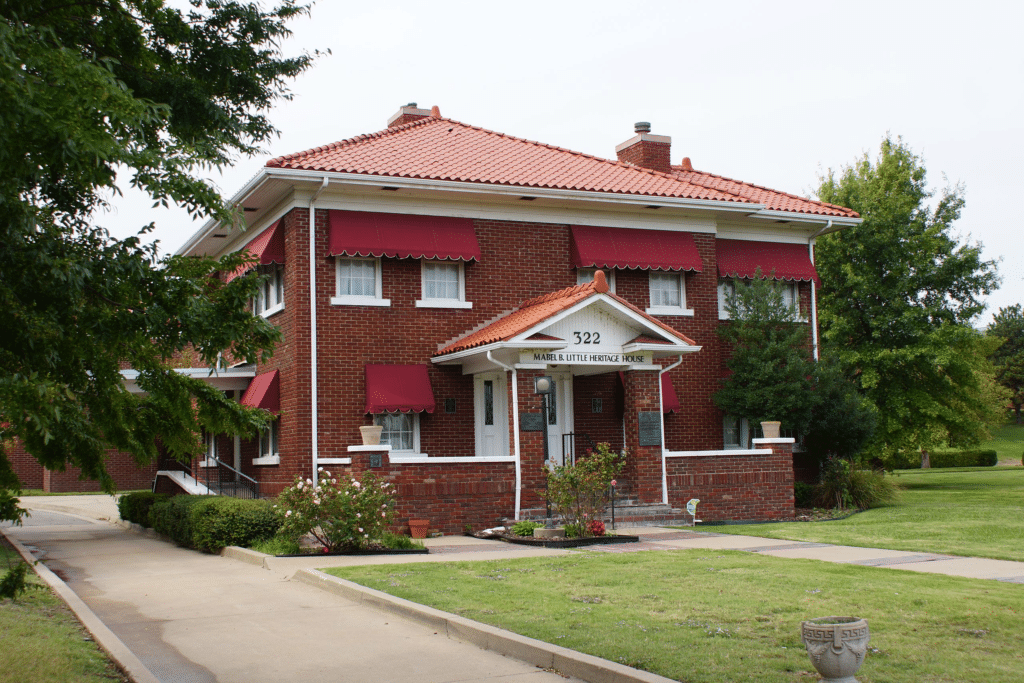
Check Out: 5 MUST-SEE Historic Sites In Oklahoma
#19. Museum of the African Diaspora
Location: San Francisco, California
At #19 on our list of the Best Black History Sites in America is the Museum of the African Diaspora.
African Diaspora is the term commonly used to describe the mass dispersion of peoples from Africa during the Transatlantic Slave Trades, from the 1500s to the 1800s. This Diaspora took millions of people from Western and Central Africa to different regions throughout the Americas and the Caribbean.
The museum is a contemporary art museum in San Francisco which holds exhibitions and presents artists exclusively of the African Diaspora.
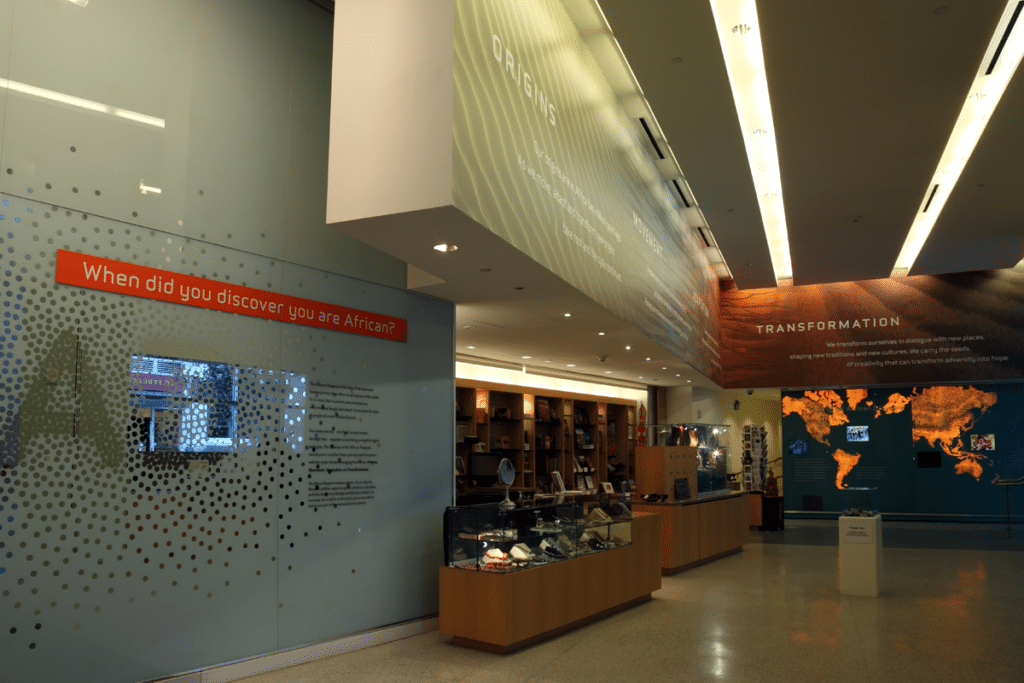
#18. Medgar and Myrlie Evers Home National Monument
Location: Jackson, Mississippi
At #18 on our list of the Best Black History Sites is the Medgar and Myrlie Evers Home National Monument.
It’s also known as Medgar Evers House. It’s a historic house museum at 2332 Margaret Walker Alexander Drive in Jackson, Mississippi.
Visitors can tour the home, which has been restored to look the way it did when Medgar and Myrlie Evers lived there.
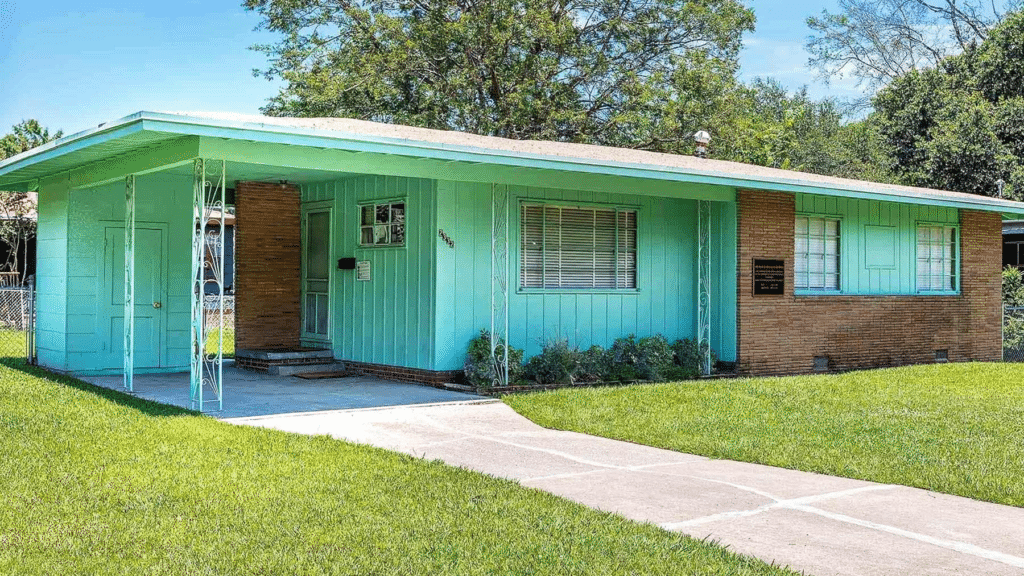
Medgar Evers
Civil Rights activist Medgar Evers was the first field secretary of the NAACP in Mississippi. He once said, “You can kill a man, but you can’t kill an idea.”
Evers organized voter-registration efforts and economic boycotts, and investigated crimes perpetrated against Black people.
Backed by federal troops, Evers led efforts to help James Meredith successfully integrate the University of Mississippi in 1962.
To protest racial injustice, he also orchestrated a major boycott of white merchants. This made him a target of the Ku Klux Klan.
Medgar Evers was assassinated outside of his Mississippi home in 1963.
It took over thirty years for justice to be done, but, in 1994, his killer was finally sent to prison.

Myrlie Evers-Williams
Myrlie Evers-Williams is an American civil rights activist and journalist who worked for over three decades to seek justice for the 1963 murder of her husband Medgar.
She picked up the torch he left behind serving as a leader of the National Association for the Advancement of Colored People (NAACP).
Myrlie Evers-Williams established the Medgar and Myrlie Evers Institute in Jackson, Mississippi. In 1995, she became the national chairwoman of the NAACP.
“I have reached a point in my life where I understand the pain and the challenges; and my attitude is one of standing up with open arms to meet them all.”
-Myrlie Evers-Williams
Myrlie also published several books on topics related to Civil Rights and Medgar Evers legacy. She delivered the invocation at the second inauguration of President Barack Obama.
Check Out: 10 MUST-SEE Historic Sites In Mississippi
#17. Beale Street Historic District
Location: Memphis, Tennessee
At #17 on our list of the Best Black History Sites is Beale Street Historic District.
It was first established in 1841. Beale Street would go on to become one of the most iconic streets in America and a thriving area for black commerce and culture around the time of the Civil War.
Beale Street was also home to many black-owned businesses, clubs, restaurants, and shops and was the headquarters of Ida B. Wells’ anti-segregationist newspaper, Free Speech. The newspaper office was housed in the historic First Baptist Church (Beale Street), which was built by a congregation of freed slaves.
Beale Street became a legendary place in the first half of the 20th century. It was during this period when it served as the inspiration behind many blues hits and creative works by musicians such as W.C. Handy, who wrote “Beale Street Blues.”
From the 1920s to 1940s, artists such as Muddy Waters, Louis Armstrong and B.B. King played on the street and subsequently developed the legendary Memphis blues sound.
During the Civil Rights Movement, the area was also where African-Americans came to entertain and be entertained, shop, strategize and protest.
When city sanitation workers decided to strike in response to deplorable job conditions, they marched down Beale Street, and Dr. Martin Luther King Jr. came to Memphis in support.
These demonstrations were a precursor to King’s assassination on April 4, 1968.
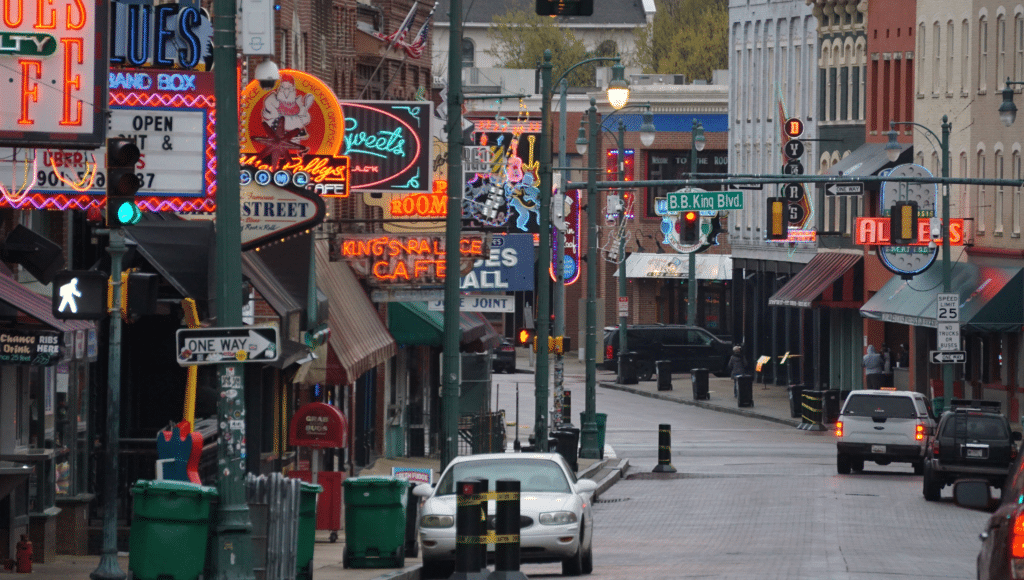
Things To See & Places To Go
There’s three blocks of nightclubs, restaurants and shops in the heart of downtown Memphis, and a melting pot of delta blues, jazz, rock ‘n’ roll, R&B and gospel. While you’re there check out: Rum Boogie Cafe, B.B. King’s Blues Club, Silky O’Sullivan’s or the Hard Rock Cafe.
If you love entertainment that’s more than just jazz than I recommend the Orpheum Theater. There you’ll find everything from Broadway productions to well known comedians.
And the best time to visit is May, not because of the weather, which is typically splendid, but because it’s time for a series of city-wide festivals which include the internationally renowned Beale Street Music Festival.
And if you’ve got a yearning to do some learning then I recommend Withers Collection Museum & Gallery, which includes an amazing collection of historic images on display.
I also recommend visiting the W.C. Handy Museum & Library Of African-American Digital Music.
For those of you who aren’t familiar with this extraordinarily gifted man, W.C. Handy is considered to be the “Father of the Blues” and one of America’s most influential songwriters.
Check Out: 15 Amazing Tennessee National Parks Worth Visiting
#16. Nicodemus National Historic Site
Location: Bogue, Kansas
At #16 on our list of the Best Black History Rights Sites in America is the Nicodemus National Historic Site.
This site tells an amazing story about a remarkable group of Americans.
This is a group which tends to be forgotten when it comes to the story of America’s Westward Expansion.
During Reconstruction, following the Civil War, formerly enslaved African Americans left Kentucky in search of the American Dream. They wanted to experience the freedom they had heard about. These people set out for the “Promised Land” of Kansas.
In 1877, the small town of Nicodemus, Kansas, was founded by newly freed slaves. Nicodemus was the first black community west of the Mississippi River.
Today, it is the only predominantly black community west of the Mississippi that remains a living community.
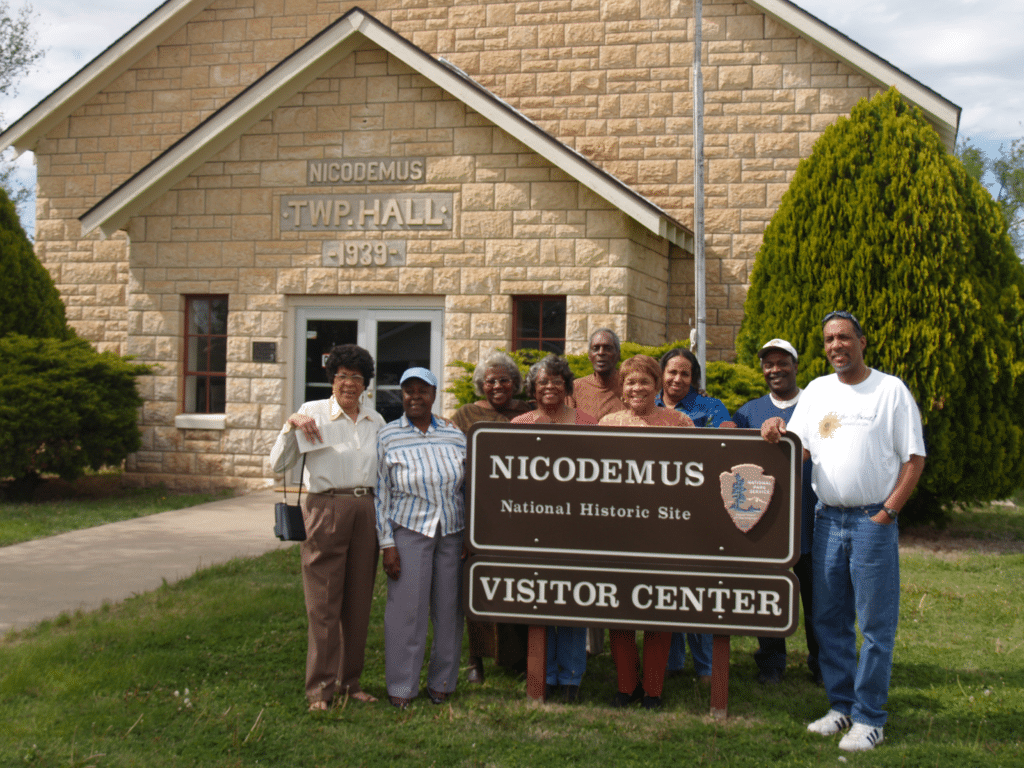
A Symbol To The Courage Of African American Settlers
Nicodemus symbolizes the courage of African American settlers who sought better lives, better lands, and better opportunities. They came to the heartland where they believed they could get a fresh start.

“Without a struggle, there can be no progress.”
-Frederick Douglass
An Enduring Monument To African American Westward Migration
Nicodemus is an enduring monument to African American westward migration. Today, visitors can take a self guided or a ranger guided tour to see the exteriors of some of the historic buildings documenting what black settlers accomplished.
These buildings include: the St. Francis Hotel, the AME Church, the First Baptist Church, the Nicodemus School District No. 1 building, and the Nicodemus Township Hall.
The Nicodemus Township Hall is the visitors center. It’s a great place to start your visit. It offers exhibits, short videos, and the opportunity to learn about the history of this town and of pioneering African Americans in the West.
Some of the descendants of the original settlers still live in Nicodemus.

Check Out: 8 EPIC Kansas National Parks
The Top 15 Black History Sites
#15. Charles Young Buffalo Soldiers National Monument
Location: Wilberforce, Ohio
At #15 on our list of the Best Black History Sites is an amazing story of a largely forgotten man. At the Charles Young Buffalo Soldiers National Monument, you can learn all about that story.
For almost 30 years, I taught high school history. What impresses me most about the field of history are the amazing stories of men and women whose contributions changed the course of human events. In doing so, they helped to bring about the world we have today.
The people we know, however, are few compared to the people we don’t. A case in point is Colonel Charles Young.
Born as a slave during the American Civil War, Charles Young lived a truly extraordinary life. He was the first African American to graduate from a white high school in Ohio. In 1884, Young defied the odds winning an appointment to West Point though a competitive military examination.
After confronting the racism which was unfortunately typical of his era, he emerged as only the third African American to graduate from West Point–America’s most prestigious military academy.
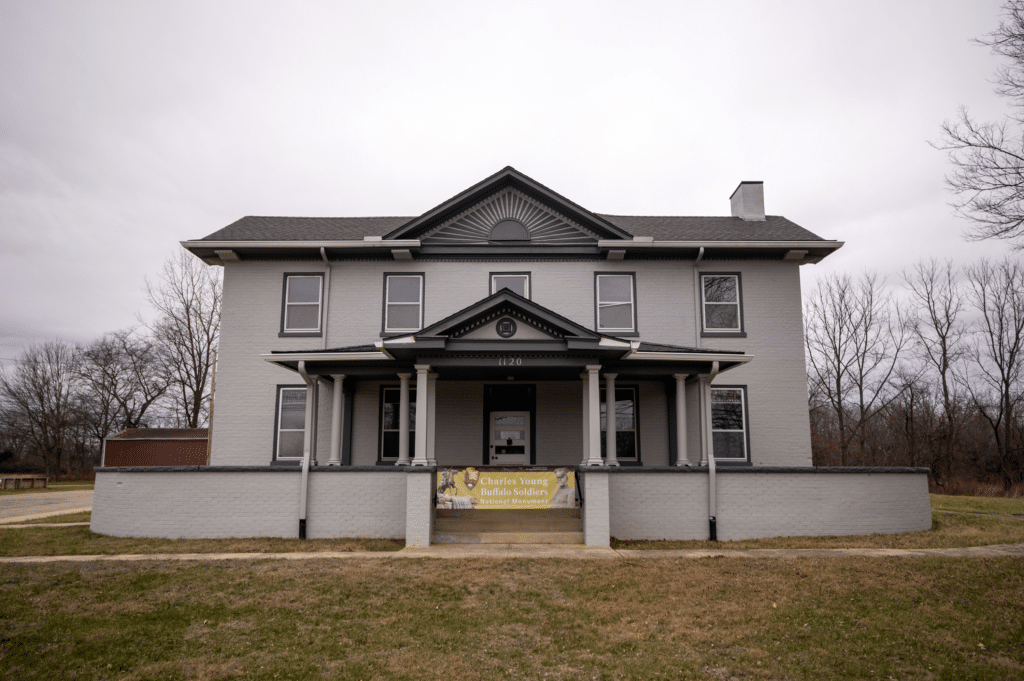
Captain Of An All Black Regiment
Young served as a cavalry officer. He then became the captain of an all-black regiment at San Francisco’s Presidio. Young’s career path would take an interesting turn when managing the national parks became the responsibility of the U.S. Army beginning in 1891.
This was before the creation of a unified system of national parks or the establishment of an elite cadre of park rangers.
By 1903, the U.S. Military was providing protection at America’s parks. Young was assigned to take his troops to Sequoia and General Grant (what is now Sequoia National Park and a small portion of Kings Canyon National Park).
It was during the summer of 1903 that he made history by becoming the acting superintendent of the these two parks. He was the first African-American to hold such a position.

Check Out: A Brief (& Informative) History Of America’s National Park Rangers
“Success is to be measured not so much by the position that one has reached in life as by the obstacles which he has overcome while trying to succeed.“
-Booker T. Washington
No Poaching On His Watch
Poaching had become a problem in the parks given their limited supervision. As a result of Young’s leadership, however, there was no poaching reported at Sequoia or General Grant during his tenure as superintendent.
In commemoration, a Sequoia Tree would be named in his honor.
Young spent one summer as an acting superintendent at Sequoia/Kings Canyon before being reassigned as a military attache in Haiti. He then served in the same position in Liberia.
RELATED: 10+ (GIANT) Sequoia Tree & Kings Canyon National Parks Facts You Probably Didn’t Know
#14. Tuskegee Institute National Historic Site
Location: Tuskegee, Alabama
Coming in at #14 on our list of the Best Black History Sites is a place where African-Americans began the long journey from freedom to economic opportunity. That place was the Tuskegee Institute.
In 1903, W. E. B. Du Bois prophetically stated: “The problem of the twentieth century is the problem of the color line.”
In Alabama, you’ll learn firsthand about what DuBois concluded when you examine the struggle for racial equality. The state offers its visitors some amazing historical sites which tell this very important story.
Booker T. Washington
On July 4, 1881, The Tuskegee Institute was founded by Booker T. Washington. It began operations as the Normal School for Colored Teachers at Tuskegee in 1881.
Washington believed the best form of education for his students—initially all future teachers themselves—would be practical skills. The school focused on modern farming methods, construction, carpentry, bricklaying, domestic service, and other industrial subjects.

In 1974, the Congress authorized the creation of Tuskegee Institute National Historic Site. Tuskegee University is the only college that is part of the National Park system. In 1985, the school became Tuskegee University.
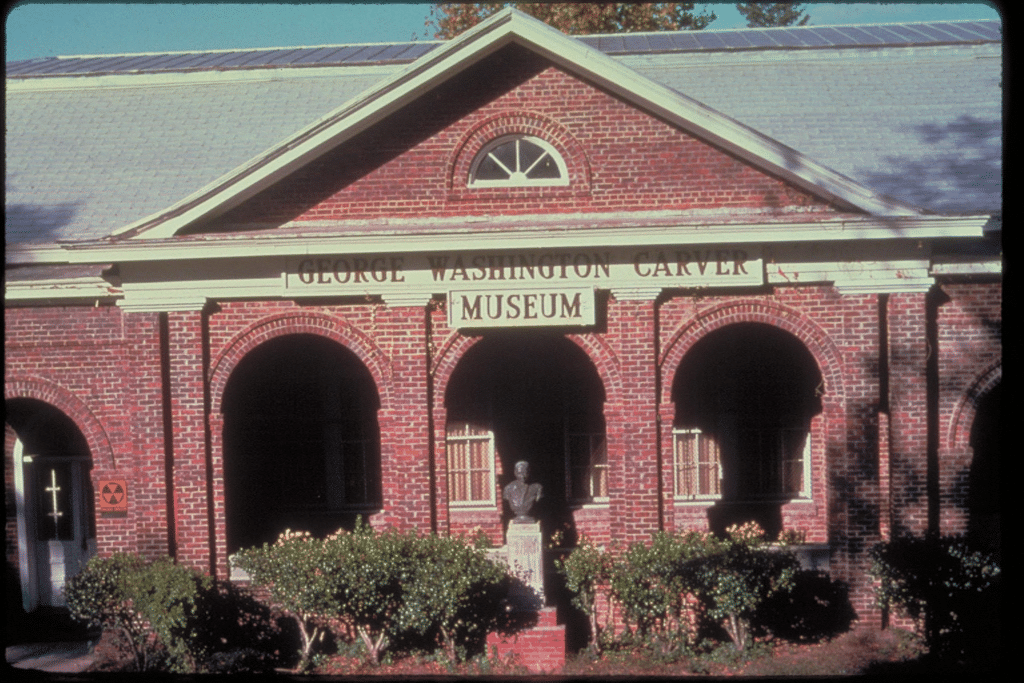
George Washington Carver
One cannot separate the work of the Tuskegee Institute from that of its most famous faculty member.
If you know anything about George Washington Carver then you likely know that he had something to do with peanuts.
Mark Hersey is a history professor at Mississippi State University. He’s the author of My Work Is That of Conservation. It’s an environmental biography of Carver.
Hersey makes the case that Carver did more than just work for peanuts. He made important contributions to the environmental movement, including his visionary ideas about self-sufficiency and sustainability.
Most Americans remember him simply as the “Peanut Man,” summarizing his life’s work with what was, arguably, his least important accomplishment. Oh, sure, Carver did discover around 300 uses for peanuts, from soap to wood stains to cooking oil — but those things were almost beside the point.
-Grist, The land-healing work of George Washington Carver
That noble cause led Carver to develop farming methods that increased crop yields, safeguarded ecological health, and revitalized soil ravaged by the overproduction of cotton, the linchpin of the South’s economy. No less importantly, Carver devoted much of his life to teaching formerly enslaved people how to use those techniques to achieve a measure of independence.”

Check Out: 5 MUST-SEE Historic Sites In Alabama
Things To Do At The Tuskegee Institute National Historic Site
I only wish I had had the funds to take my students to this incredible place when I was teaching them about the historical experiences of African-Americans.
The George Washington Carver Museum is a place where you can learn about one extraordinary African-American. It’s open to the public. It features exhibits, interpretive programs, and a bookstore.
The “Oaks” is the home of George Washington Carver. You can take free ranger-guided tours of his historic home.
Visitors are also free to explore the historic campus of the Tuskegee Institute.
A map of the District and limited campus tours are available from the Carver Museum.
#13. Negro Leagues Baseball Museum
Location: Kansas City, Missouri
At #13 on our list of the Best Black History Sites, we recognize the achievements of an extraordinary group of African-American athletes who were not permitted to play in the major leagues.
The Negro Leagues Baseball Museum is dedicated to telling their incredible story.
Baseball is America’s National Pastime. African-Americans began to play baseball in the late 1800s on military teams, college teams, and company teams. They eventually found their way to professional teams with white players.
Moses Fleetwood Walker and Bud Fowler were among the first to participate. However, racism and “Jim Crow” laws would force them from these teams by 1900. Thus, black players formed their own units, “barnstorming” around the country to play anyone who would challenge them.
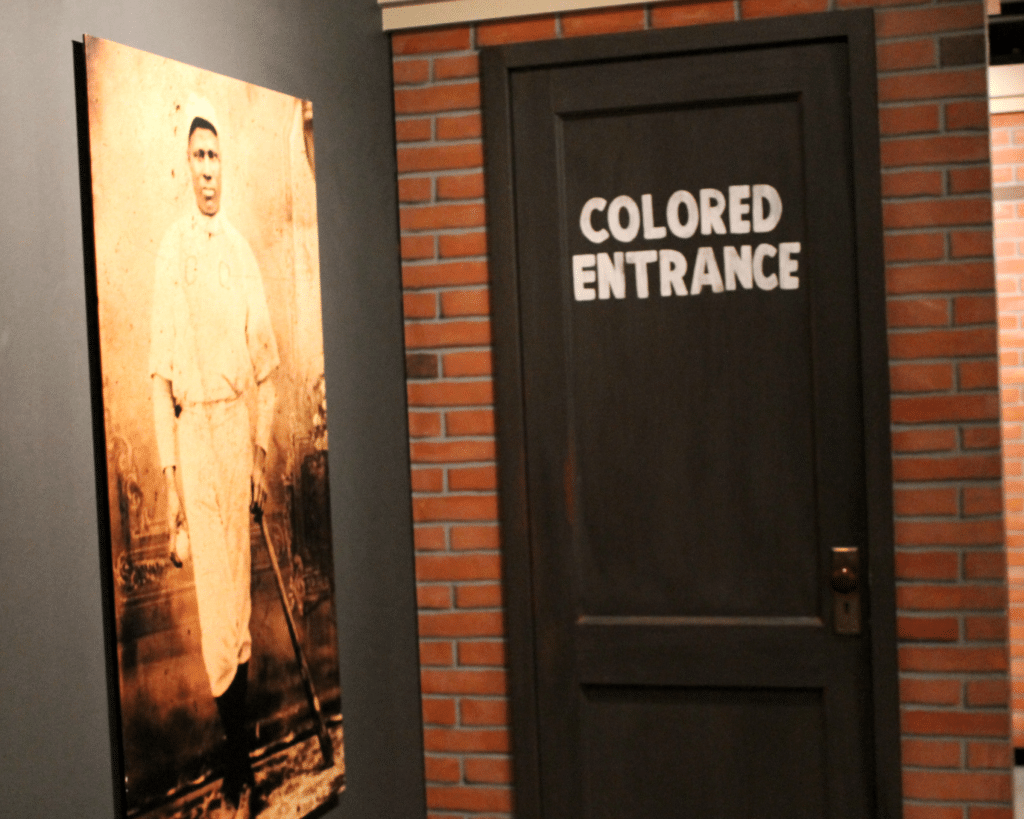
Creation Of The Negro Leagues
In 1920, an organized league structure was formed under the guidance of Andrew “Rube” Foster—a former player, manager, and owner for the Chicago American Giants. In a meeting held at the Paseo YMCA in Kansas City, Mo., Foster and a few other Midwestern team owners joined to form the Negro National League.
Soon, rival leagues formed in Eastern and Southern states, bringing the thrills and innovative play of black baseball to major urban centers and rural country sides in the U.S., Canada, and Latin America.
The Leagues maintained a high level of professional skill and became centerpieces for economic development in many black communities. (Source: Negro League Baseball Museum)
And Why Not Check Out The Jacki Robinson Museum
The impact Jackie Robinson made on Major League Baseball is one that will be forever remembered. He’s the man who courageously shattered the color barrier in major league sports.
Robinson played for the Kansas City Monarchs of the Negro Leagues until Brooklyn Dodgers general manager Branch Rickey tabbed him as the player who would integrate the white major leagues. Rickey wanted Robinson not only for his talent and style of play, but also because of his demeanor.
And the rest, as they say, is history. You can learn about that history at the Jackie Robinson Museum. Located at One Hudson Square in New York City, the Museum explores Robinson’s unwavering commitment to social justice and equal opportunity. It will tells the story of some other pioneers who worked alongside Jackie, shared his challenges, and, like him, changed this nation forever.
“A life is not important except in the impact it has on other lives.”
-Jackie Robinson
Things To See & Do
The Negro League Baseball Museum is a self-guided tour experience.
The exhibition features text panels, hundreds of photographs, artifacts and several film exhibits that is integrated with a timeline of baseball and African American history.
To learn more about this fascinating and important time in America’s history, I recommend reading A Complete History of the Negro Leagues: 1884 to 1955 by Mark Ribowsky or Shades of Glory: The Negro Leagues and the Story of African-American Baseball by Lawrence D. Hogan. Or both!
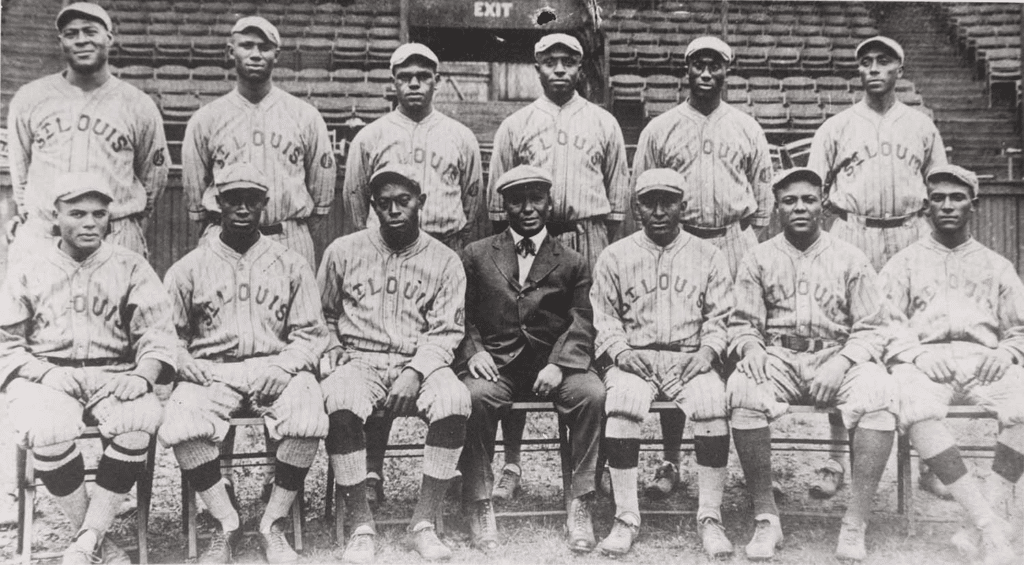
#12. Tuskegee Airmen National Historic Site
Location: Tuskegee, Alabama
At #12 on our list of the Best Black History Sites we return to Tuskegee, Alabama, to celebrate a heroic group of men who demonstrated that there was nothing white pilots couldn’t do which they couldn’t do as well or even better.
The Tuskegee Airmen National Historic Site celebrates the story of a remarkable group of airmen who had to fight a war at home and abroad.
Jackie Robinson proved that there was nothing a white man could do in the major leagues that a black man couldn’t. Most people know his story.
What most people don’t know, however, is the story of an extraordinary group of African American pilots who proved there’s nothing they couldn’t do in defense of their country as well or better than their white counterparts.
African Americans had to fight the prejudices of their fellow countrymen before they could take up arms against the enemies of America.
It was a Howard University student who initially lodged a lawsuit in protest. His efforts in conjunction with mounting pressure from the black press and the NAACP persuaded President Franklin D. Roosevelt and his wife Eleanor to give African Americans the opportunity to fly combat missions in World War Two.
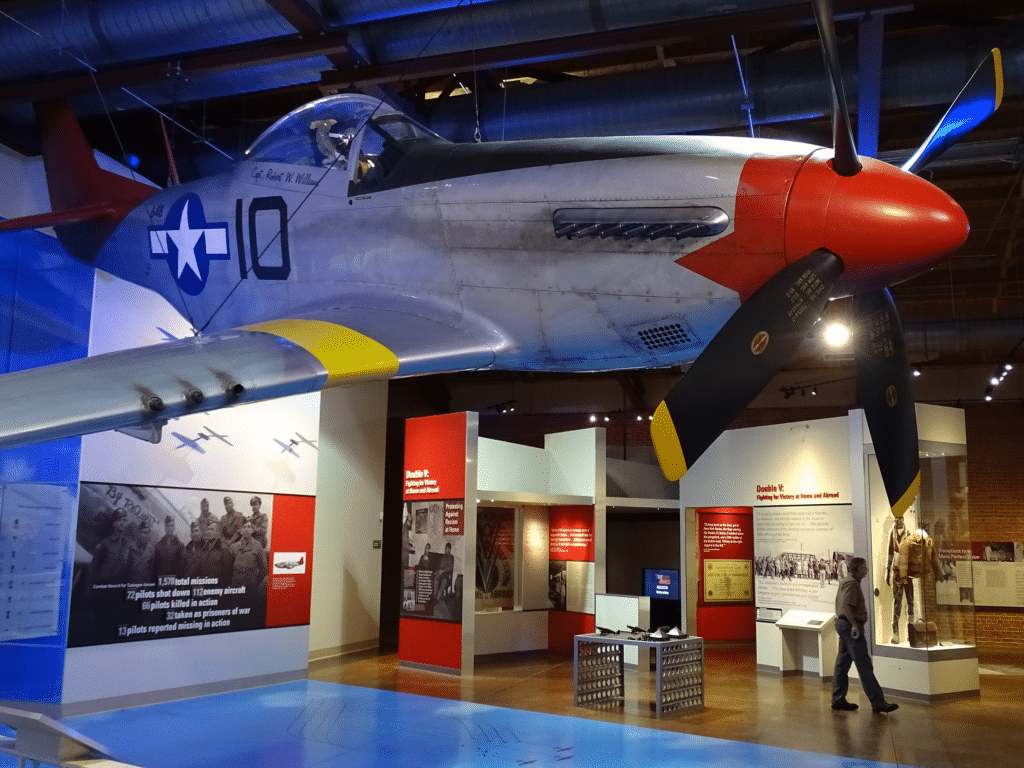
It Began In Tuskegee, Alabama
Initially, Tuskegee produced twelve cadets and one officer, Captain Benjamin O. Davis, Jr. Davis went on to become the Air Force’s first African American general.
These men and their commander formed the 99th Pursuit Squadron.
The 99th fought with in the Mediterranean Theater. Three new Tuskegee squadrons joined them to form the 332nd Fighter Group. The 332nd distinguished itself in Italy, flying combat missions and escorting bombers.
Just how good were they? These pilots shot down 409 German aircraft, destroyed 950 units of ground transportation and sank a destroyer with machine guns alone — a unique accomplishment.
Their most distinctive achievement, however, was that not one friendly bomber was lost to enemy aircraft during their 2000 escort missions. No other fighter group which undertook a comparable number of missions can make the same claim.
“The Tuskegee story is an important civil rights story of Americans who happen to be black, in service to their country, their family, and to their friends — in that order.”
– Col. Charles E. McGee, National President of the Tuskegee Airmen
Discover One Of Our Nation’s Proudest Chapters At The Tuskegee Airmen National Historic Site
When you arrive at the Tuskegee Airmen National Historic Site in Tuskegee, Alabama, you should begin your visit by watching the 28-minute film which recounts the story of the first African American military aviators in the U.S. Armed Forces.
After seeing the film tour the outside grounds, visit the museum inside hangars 1 & 2, explore the park store and soak up what is an incredibly moving experience.
These men are heroes in every sense of the word. Anyone who has the opportunity should travel to the Tuskegee Airmen National Historic Site in Tuskegee, Alabama.
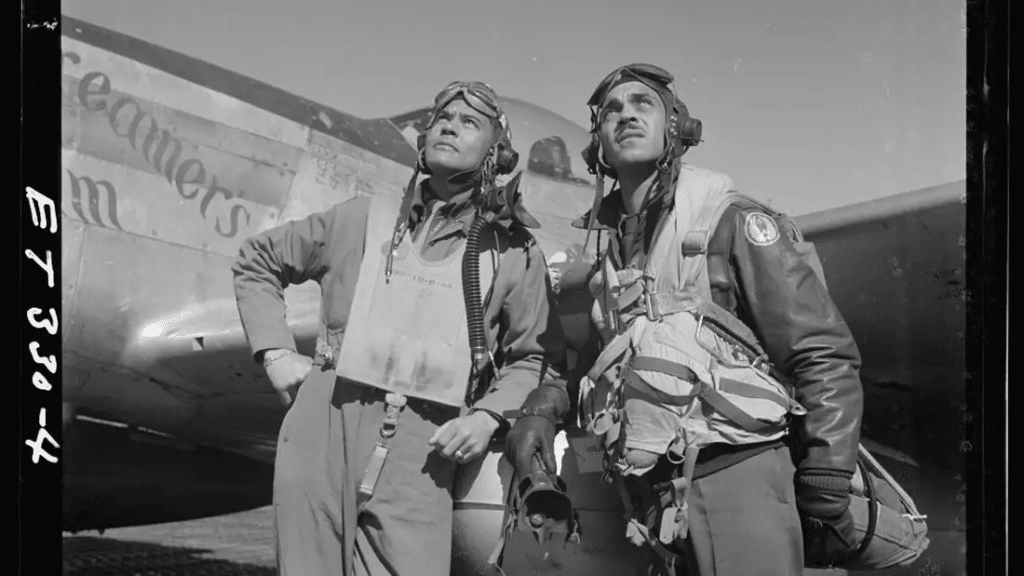
Fascinating Facts About The Tuskegee Airmen
- No one actually called them the Tuskegee Airmen during World War Two. This name was coined by author Charles E. Francis in the title of his 1955 book, The Tuskegee Airmen.
- Eleanor Roosevelt visited Tuskegee At her request, Charles A. Anderson, a pilot known as “the father of Black aviation, took her on an aerial tour The resulting news photograph of Roosevelt and Anderson showed the world that Black Americans were fit to fly aircraft.
- The first three African American generals in the U.S. Air Force were Tuskegee Airmen. They were Benjamin O. Davis, Daniel “Chappie” James, Jr. and Lucius Theus.
- In 2007, the Tuskegee Airmen were awarded the Congressional Gold Medal. This is the highest civilian award bestowed by the United States Congress. It was given to the airmen, including military and civilian support staff, for their “unique military record that inspired revolutionary reform in the armed forces.”
Check Out: 11 BEAUTIFUL Alabama National Parks
#11. National Underground Railroad Freedom Center
Location: Cincinnati, Ohio
At #11 on our list of the Best Black History Sites is the National Underground Railroad Freedom Center. Of course, as a former history teacher, I had to explain to my students that The Underground Railroad was no ordinary train station.
In reality, The Underground Railroad was a network of people, African American as well as white, offering shelter and aid to escaped enslaved people from the South.
So, how exactly did this railroad work? As a high school history teacher, I lost track of how many times I was asked that question.
People known as “conductors” guided the fugitive enslaved people. Hiding places included private homes, churches and schoolhouses. These were called “stations,” “safe houses,” and “depots.”
The people operating them were called “stationmasters.”

Related: 10 BEST Civil War Sites In America
Things To Do
I recommend beginning in the Harriet Tubman Theater. There you will see Suite For Freedom which features a trilogy of distinct but interrelated animated shorts tied together by a musical suite. The artistry of three world-class animators and musicians combined with inspiring words creates a unique visual experience.
From there, it’s on to Invisible Slavery Today. It’s the world’s first museum-quality, permanent exhibition on the subjects of modern-day slavery and human trafficking.
This powerful exhibit offers a comprehensive examination of slavery in the modern world through the life experiences of five individuals who were caught up in one of the five most common forms of exploitation: forced labor, bonded indenture, child slavery, sex trafficking and domestic servitude.
Harriet Tubman
We can’t examine the importance of The Underground Railroad without mentioning its most important conductor. The most famous of these “conductors” was herself born a slave. In 1849, Araminta Ross, escaped a plantation in Maryland with two of her brothers.
Harriet Tubman became her married name and one by which she would win eternal fame.
Tubman returned to the south to lead her niece and her niece’s children to Philadelphia via the Underground Railroad. She became a dedicated abolitionist who is believed to have personally rescued 300 people.
After the Civil War began, Tubman became head of an espionage and scout network for the Union Army. She provided crucial intelligence to Union commanders about Confederate Army supply routes and troops and helped liberate enslaved people to form Black Union regiments.
An excellent book about this extraordinary women is Scenes in the Life of Harriet Tubman by Sarah Hopkins Bradford.
“I was the conductor of the Underground Railroad for eight years, and I can say what most conductors can’t say — I never ran my train off the track and I never lost a passenger.”
-Harriet Tubman

Related: 25 EPIC New York State National Parks To Visit
Unfortunately Slavery Is Not Just A Part Of Our Past
The exhibition explores the causes of slavery, the economic forces that have contributed to its growth, and the response of government, the justice system and the general public to this scourge.
Believe it or not, today an estimated 40 million people are enslaved which is more people than ever before. I would quote this grim statistic to my students when inevitably one of them would ask, “Why do we need to learn this stuff anyway?”
A major concluding section is devoted to anti-slavery activities underway around the world, especially by the Freedom Center’s partners in the exhibition: Free the Slaves, Goodweave, International Justice Mission and Polaris Project. (Source: National Underground Railroad Freedom Center)
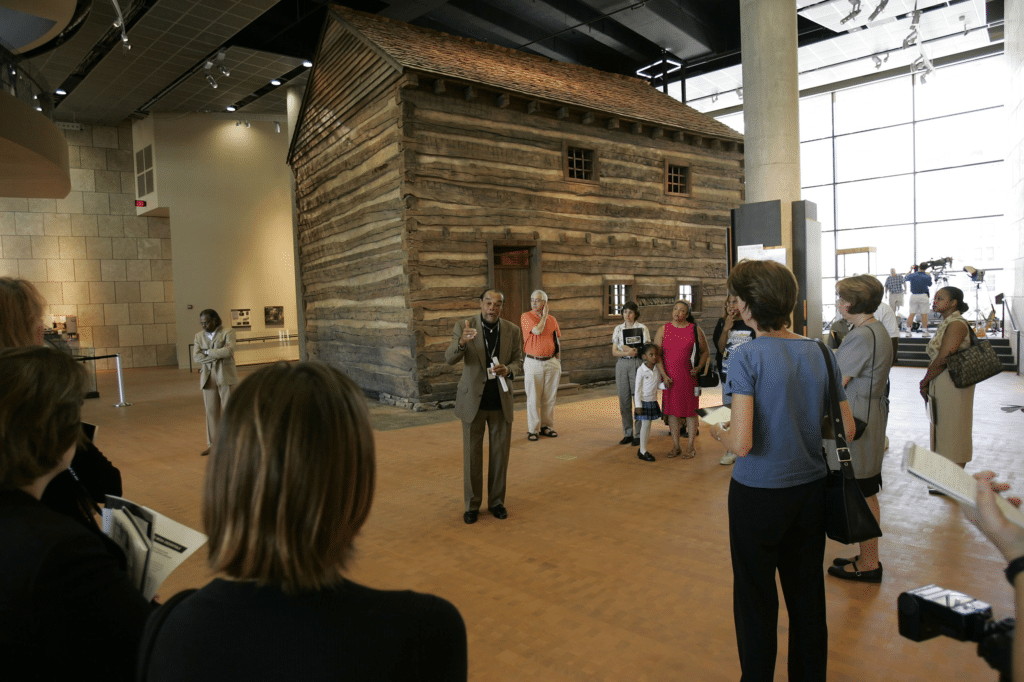
Top 10 Black History Sites In America
#10. The Legacy Museum
Location: Montgomery, Alabama
We begin our Top Ten List Of The Best Black History Sites In America with The Legacy Museum.
It was Pulitzer-Prize Winning Author & Historian David McCullough who said, “History is a guide to navigation in perilous times. History is who we are and why we are the way we are.”
The Legacy Museum: From Enslavement To Mass Incarceration brings McCullough’s quote to life by examining how the end of the Civil War was just the beginning of the fight for freedom for African-Americans.
This museum is located near the former site of one of the most prominent slave auctions in the country. It’s just steps away from the rail station that trafficked tens of thousands of enslaved people during the height of the slave trade.

Take A Trip Back In Time
On entering the museum, visitors take a trip back in time. You are confronted with replicas of slave pens and you experience what it would have been like to be imprisoned while waiting for the auction block. There’s powerful narration taken from first-person accounts of enslaved people which brings a sobering authenticity to the exhibits.
Beyond slavery, these important displays and powerful visuals are based on extensive research of the horrific lynching and dehumanization wrought by the South’s Jim Crow laws.
What this extraordinary museum does is to engage its visitors in understanding the legacy of America’s racial injustice. They also provide a link from the past to current social issues such as mass incarceration of African-Americans and police violence.
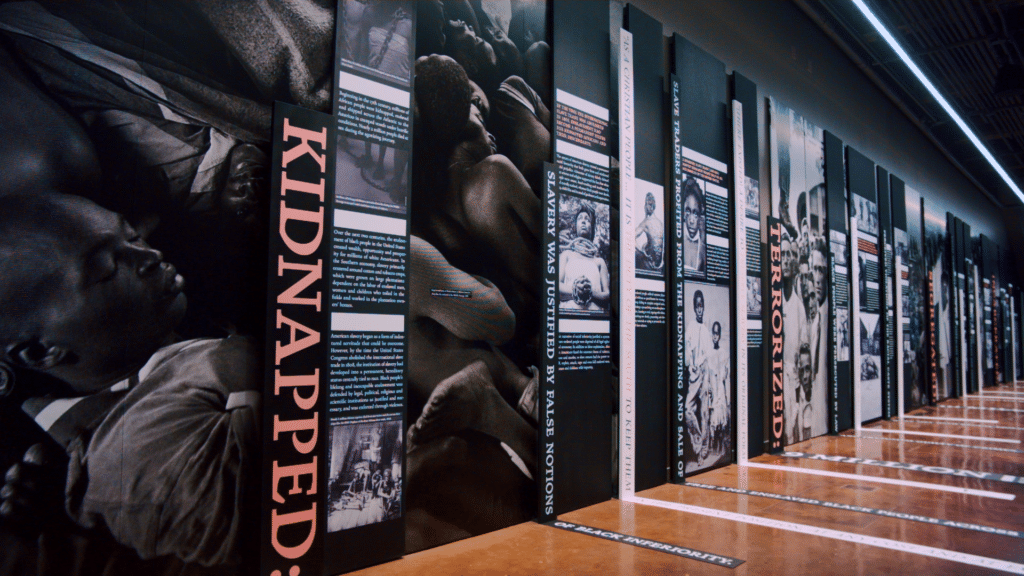
Slavery By Another Name
To truly understand and appreciate the history that isn’t being taught in schools today, I recommend Slavery by Another Name: The Re-Enslavement of Black Americans from the Civil War to World War II by Douglas A. Blackmon.
The book, winner of the 2009 Pulitzer Prize in Non-Fiction, examines laws which were enacted during the first half of the twentieth century long after the end of the Civil War and the passage of the 13th, 14th and 15th amendments.
These laws were enacted specifically to intimidate and marginalize people of color. As a consequence, tens of thousands of African-Americans were arbitrarily arrested, hit with outrageous fines, and charged for the costs of their own arrests.
With no means to pay these ostensible “debts,” prisoners were sold as forced laborers to coal mines, lumber camps, brickyards, railroads, quarries, and farm plantations.
Thousands of other African Americans were simply seized by southern landowners and compelled into years of involuntary servitude. Government officials leased falsely imprisoned blacks to small-town entrepreneurs, provincial farmers, and dozens of corporations—including U.S. Steel—looking for cheap and abundant labor.
Armies of “free” black men labored without compensation, were repeatedly bought and sold, and were forced through beatings and physical torture to do the bidding of white masters for decades after the official abolition of American slavery.

Related: 10 BEST Civil Rights Sites In America
#9. The National Memorial for Peace and Justice
Location: Montgomery, Alabama
Coming in at #9 on our list of the Best Black History Sites is the National Memorial For Peace & Justice.
To truly understand why so many would be willing to risk their lives and their futures for a more perfect union it is important to fully appreciate the injustices which were perpetrated against African-Americans long after Lincoln’s Emancipation Proclamation and the 13th, 14th & 15th Amendments had become the laws of the land.
The National Memorial for Peace and Justice opened on April 26, 2018. It’s the nation’s first memorial dedicated to the legacy of enslaved Black people, people terrorized by lynching, African Americans humiliated by racial segregation and Jim Crow.
For much of our history, people of color were burdened with contemporary presumptions of guilt and police violence.
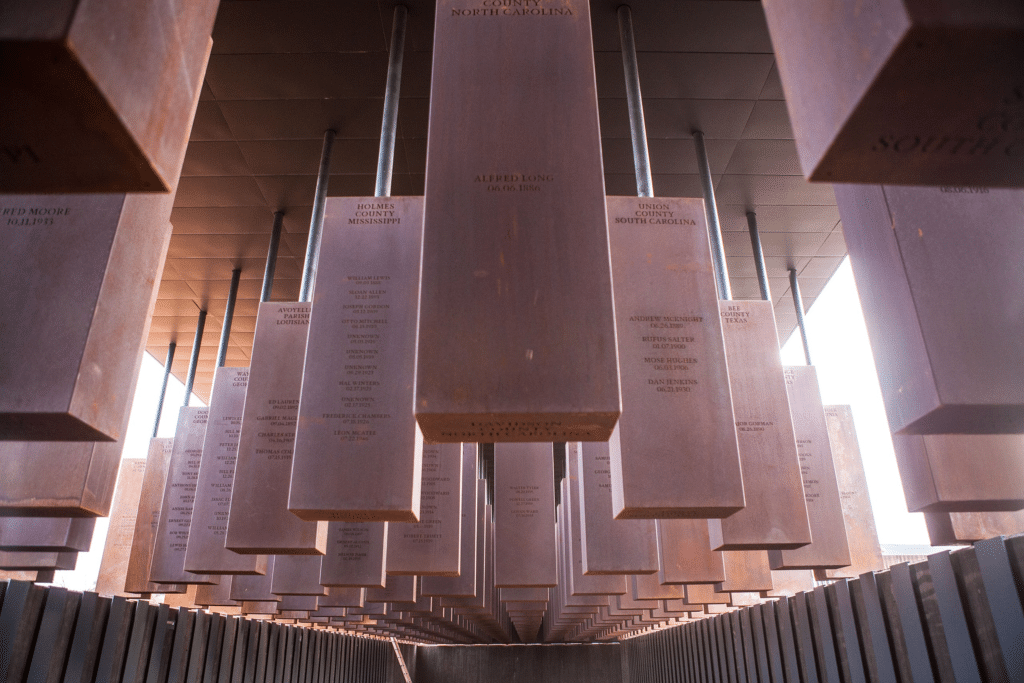
Confronting The Legacy Of Racial Terror
More than 4400 African American men, women, and children were hanged, burned alive, shot, drowned, and beaten to death by white mobs between 1877 and 1950.
The National Memorial for Peace and Justice is a sacred space which confronts this frightful legacy of domestic terrorism by using sculpture, art, and design to contextualize racial terror.
The site includes a memorial square with 800 six-foot monuments to symbolize thousands of racial terror lynching victims in the United States and the counties and states where this terrorism took place.
Visitors are led on a powerful journey from slavery, through lynching and racial terror, with text, narrative, and monuments to the lynching victims in America. This powerful experience continues through the Civil Rights era.
To learn more, I recommend reading Black Reconstruction in America, 1860-1880 by W.E.B. DuBois.

#8. Martin Luther King, Jr. Memorial
Location: Washington, D.C.
Coming in at #8 on our list of the Best Black History Sites is a tribute to a man became the leader of the Civil Rights Movement in America.
Described as the “conscience of the nation,” Martin Luther King, Jr. was a Baptist Minister who became the leading spokesperson of the Civil Rights Movement in the 1960s.
Dr. King advanced the cause of Civil Rights through nonviolence. His marches and protests helped to build pressure to bring about landmark Civil Rights and Voting Rights acts.
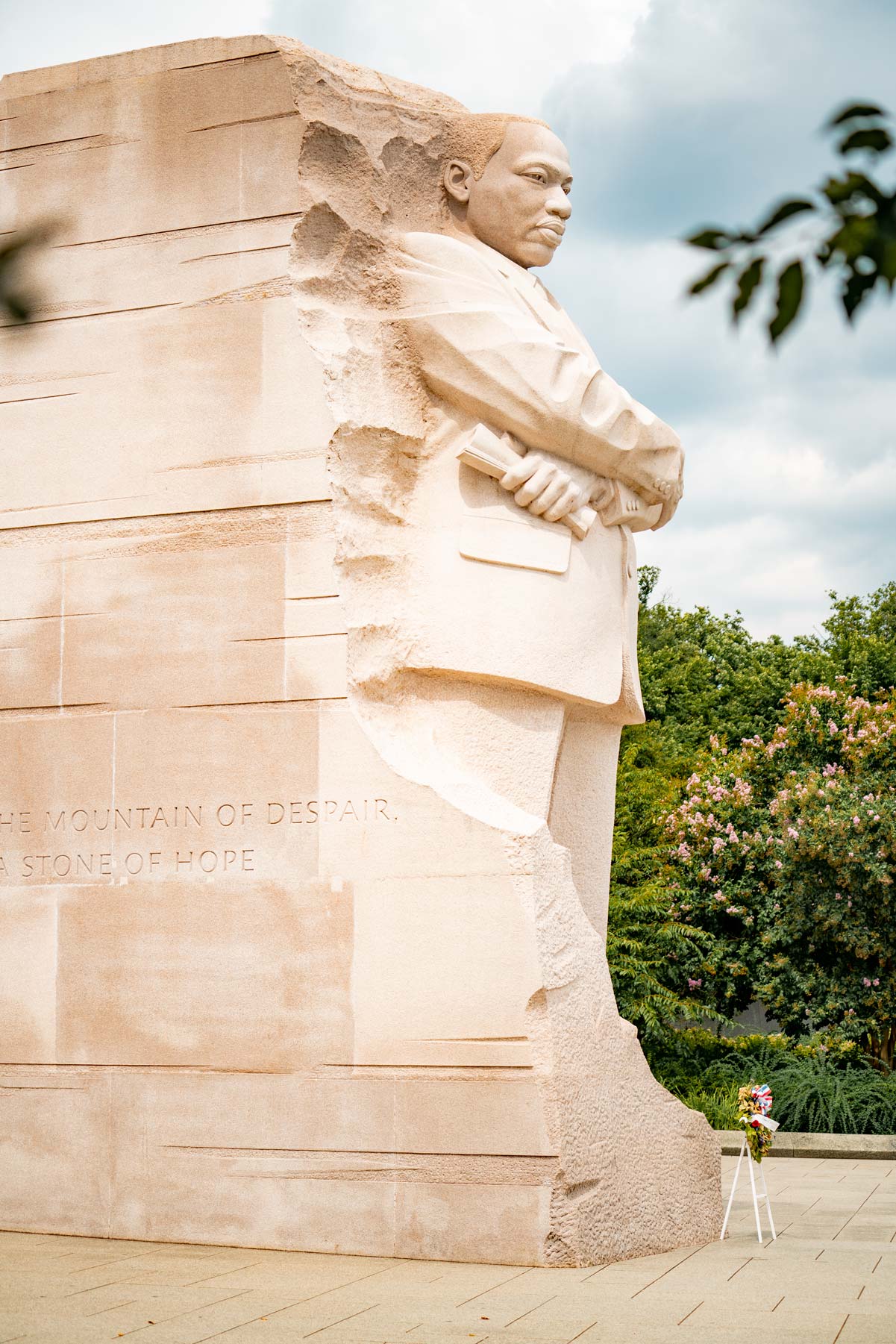
Related: 36 EPIC National Parks In Washington, D.C.
#7. Frederick Douglass National Historic Site
Location: Washington, D.C.
At #7 on our list of the Best Black History Sites is the Frederick Douglass National Historic Site.
Frederick Douglass was born into slavery in 1818. He escaped as a young man and became a leading voice in the abolitionist movement. His tireless struggle, brilliant words, and inclusive vision of humanity helped to rally public opinion in the North against slavery.
Today his legacy is preserved here at Cedar Hill, where he lived his last 17 years of his life.
On September 5, 1962, the Frederick Douglass estate became a unit of the National Park Service. Today visitors can tour his home including his library. There’s also an online collection which includes portraits and other books from Frederick Douglass’s library.
There’s also a wonderful bookstore which is operated by America’s National Parks and sells unique educational products and books related to Frederick Douglass.
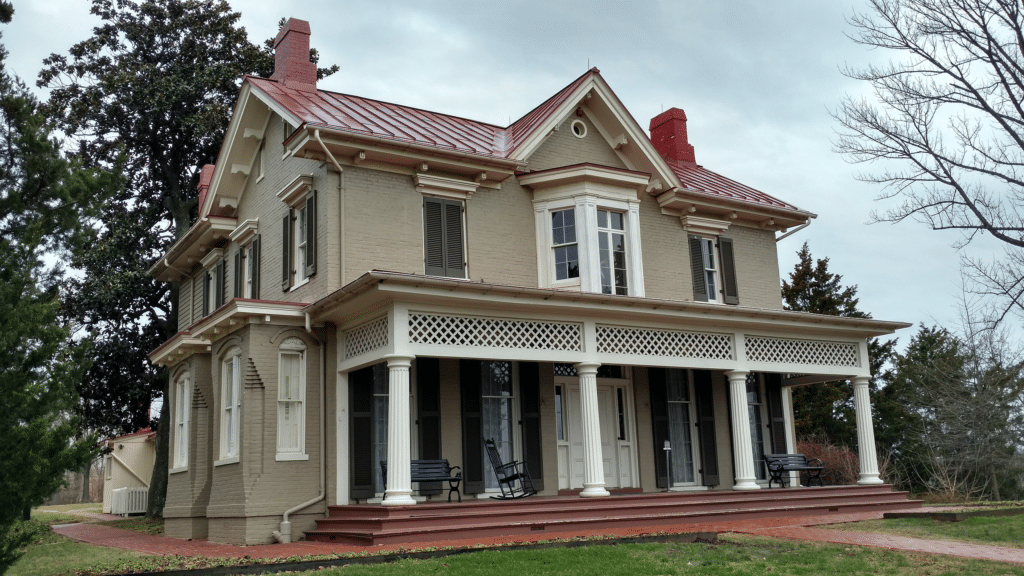
I prefer to be true to myself, even at the hazard of incurring the ridicule of others, rather than to be false, and to incur my own abhorrence.
-Frederick Douglass
#6. Mississippi Civil Rights Museum and Museum of Mississippi History
Location: Jackson, Mississippi
At #6 on our list of the Best Black History Sites is the Mississippi Civil Rights Museum and Museum of Mississippi History.
Mississippi was at the forefront of the struggle for racial equality in America. This museum celebrates the contributions of heroic African-Americans.
Visitors can discover stories of Mississippians like Medgar Evers, Fannie Lou Hamer and Vernon Dahmer—as well as those who traveled many miles to stand beside them, come what may, in the name of equal rights for all.
Visitors to the museum will witness the freedom struggle in eight interactive galleries that show the systematic oppression of black Mississippians and their fight for equality that transformed the state and nation. Seven of the galleries encircle a central space called “This Little Light of Mine.”
There, a dramatic sculpture glows brighter and the music of the Movement swells as visitors gather.
(Source: Mississippi Civil Rights Museum and Museum of Mississippi History).
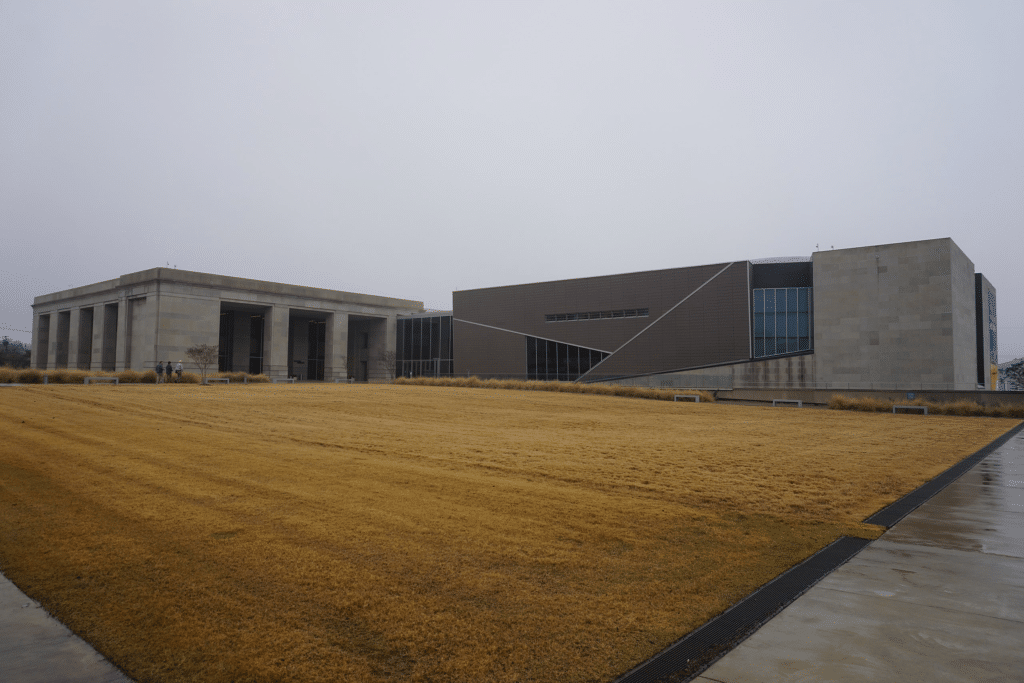
Top 5 Black History Sites In America
#5. National Voting Rights Museum and Institute
Location: Selma, Alabama
We begin our final countdown with the Top 5 Best Black History Sites In America.
“Hands that picked cotton can pick our president.” That was the cry of Civil Rights protesters who risked life and limb to bring about landmark Civil Rights & Voting Rights legislation.
The National Voting Rights Museum and Institute explores the history of this historic struggle. Visitors can immerse themselves in this story by seeing the memorabilia honoring the attainment of Voting Rights.
Exhibits depict the voting rights struggle in America from “Bloody Sunday,” the Selma to Montgomery March, and the Civil Rights Movement.
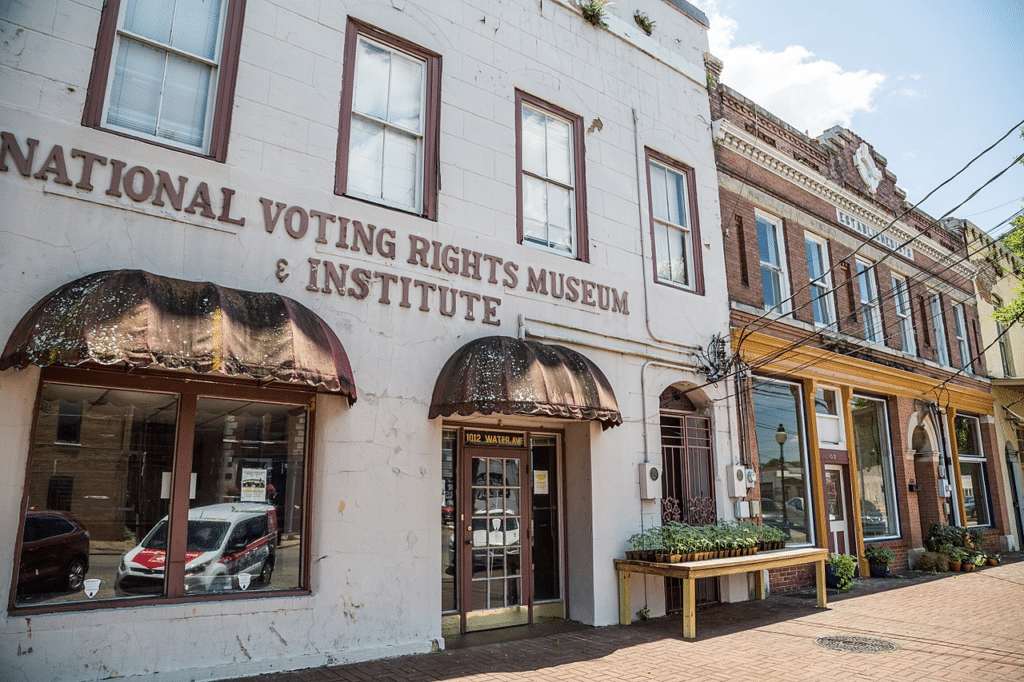
#4. Rosa Parks Museum
Location: Montgomery, Alabama
It’s the Final Four and at #4 on our list of the Best Black History Sites is the Rosa Parks Museum.
Troy University’s Rosa Parks Museum is an active memorial to the life of civil rights icon Rosa Parks and the lessons of the Montgomery Bus Boycott that brought racial integration to transportation and international attention to Civil Rights.
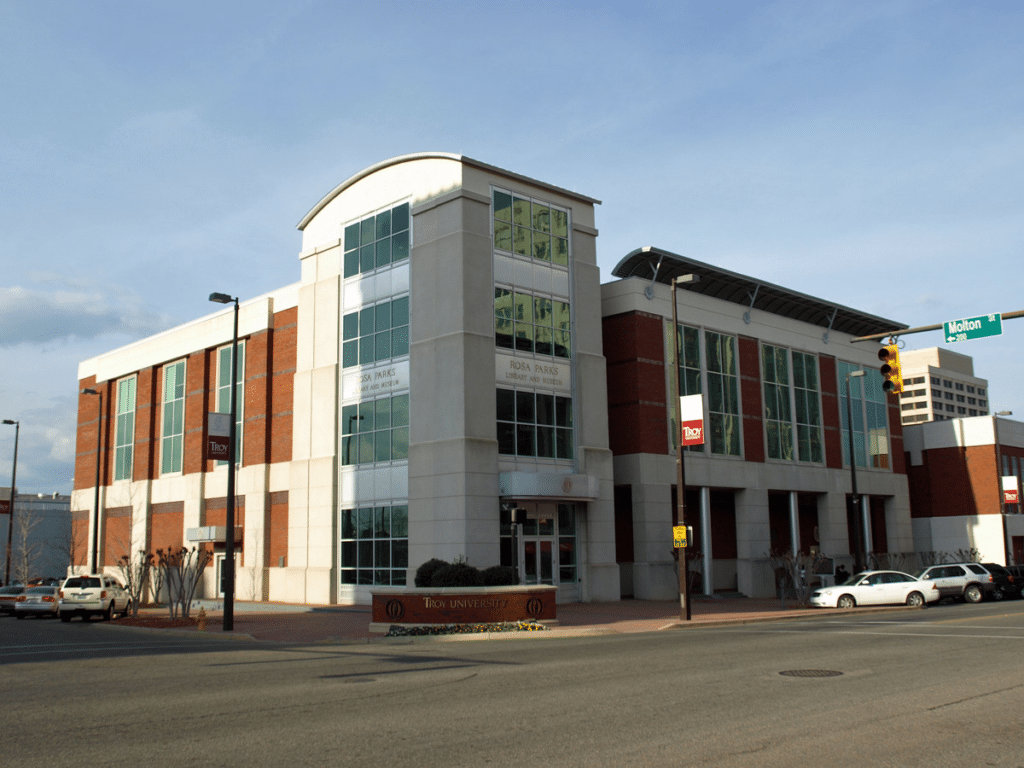
Rosa Parks Life & Legacy
Rosa Parks took a stand simply be refusing to get up. Her heroic act of civil disobedience was the beginning of the Civil Rights Movement in America.
Rosa Parks was arrested in Montgomery, Alabama, for refusing to give up her seat to a white passenger in 1955. For 381 days, African-Americans boycotted public transportation to protest Parks’ arrest and, in turn, segregation laws.
Parks became known as “the Mother of the Civil Rights Movement.”
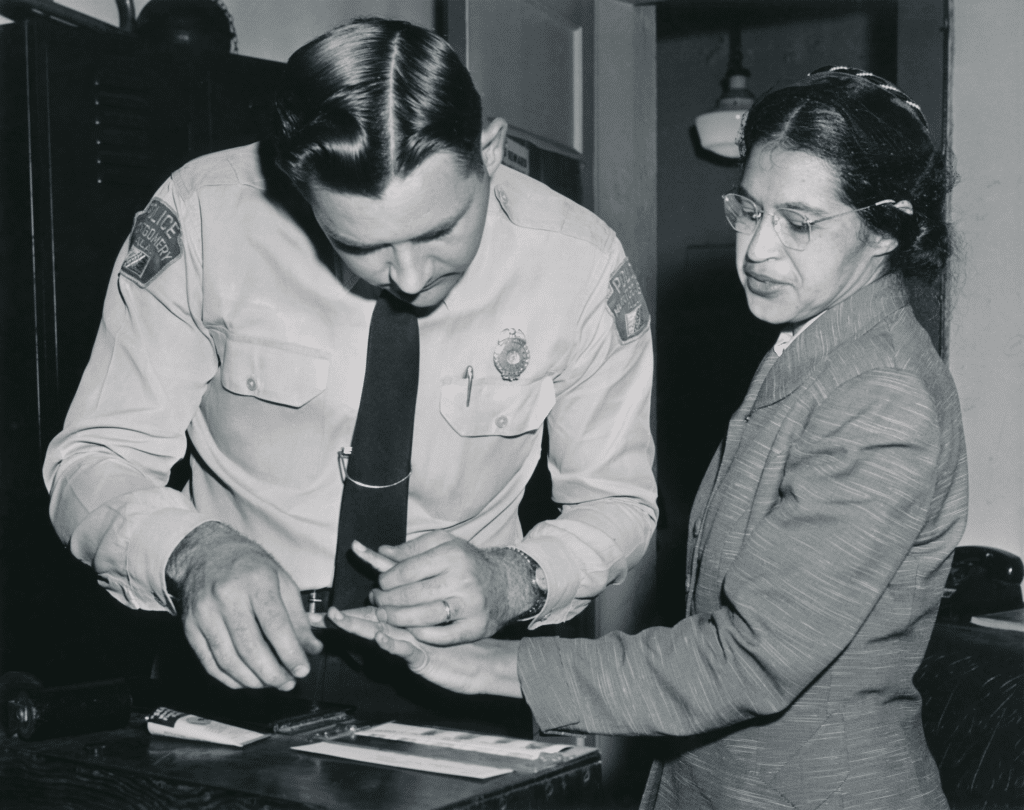
A Life Dedicated To Service
Parks began life on a small farm with her grandparents before moving to Montgomery. She married Raymond Parks and joined the Montgomery National Association for the Advancement of Colored People (NAACP). Parks had served as the secretary of the local NAACP for twelve years (1943-1956).
In the wake of the Montgomery Bus Boycott, Parks lost her tailoring job and received death threats. She and her family moved to Detroit, Michigan in 1957.
Despite all of the hardship and adversity, she remained an active member of the NAACP . Parks worked for Congressman John Conyers (1965-1988) helping the homeless find housing.
The Rosa and Raymond Parks Institute Of Self-Development was established in 1987 to offer job training for black youth.
In 1999, Parks received the Congressional Gold Medal of Honor, the highest honor a civilian can receive in the United States. The Southern Christian Leadership Conference (SCLC) also sponsors an annual Rosa Parks Freedom Award. (Source: NPS)
To learn more about this remarkable lady, I recommend Rosa Parks: My Story by Rosa Parks & Jim Haskins.
Things To Do At The Rosa Parks Museum
The Rosa Parks Museum contains a number of historically significant artifacts including the original fingerprint arrest record of Mrs. Parks, a 1950s-era Montgomery city bus, original works of art including statuary and quilts, court documents and police reports, as well as a restored 1955 station wagon (known as a “rolling church”) used to transport protesters.
While you’re there you’ll get to peer into the faces and hear the voices of brave men and women who fought for freedom. Exhibits give visitors a glimpse of the segregated South and the daily injustices confronted by African Americans.
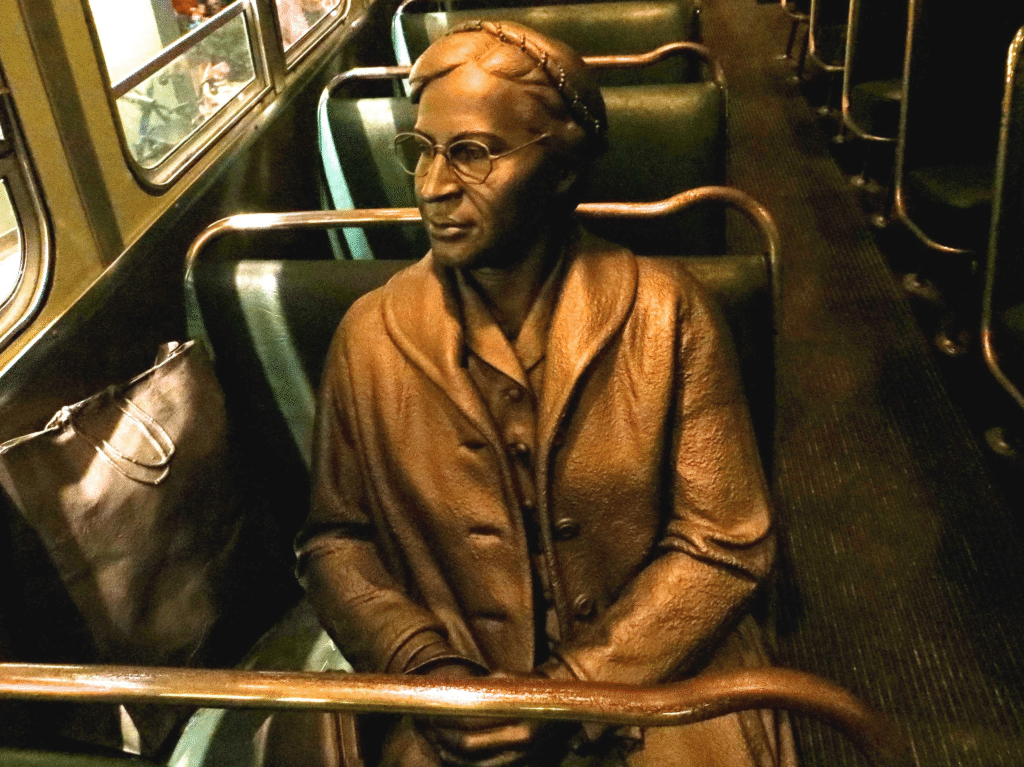
#3. Martin Luther King Jr. National Historic Park
Location: Atlanta, Georgia
At #3 on our list of the Best Black History Sites is the Martin Luther King, Jr. National Historical Park.
Dr. King fought for justice through peaceful protest—and delivered some of the 20th century’s most iconic speeches. Martin Luther King, Jr., is a civil rights legend.
In the 1950s and 1960s, he led the movement to end segregation and counter prejudice in the United States through the means of peaceful protest.

Check Out: 10 MUST-SEE Historic Sites In Georgia
Things to See at this Civil Rights Site
The Martin Luther King Jr. National Historical Park consists of several buildings in Atlanta, Georgia. It includes Dr. King’s boyhood home, the original Ebenezer Baptist Church and The Martin Luther King, Jr. Center for Nonviolent Social Change (“The King Center”).
The National Park Service has restored many of the neighboring buildings to reflect their appearances in the 1930s and 1940s — the period of time when Dr. King grew up there.
Visitors today can step into that era and imagine themselves walking with the residents, hearing the noise of this lively neighborhood and experiencing what life was like in those tumultuous times. (Source: National Park Service)

Take A Deeper Dive With This Excellent History Of The Civil Rights Movement In American
In my humble opinion, the best overall history of the Civil Rights Movement in America is the Taylor Branch Trilogy.
These books include: Parting the Waters : America in the King Years 1954-63, Pillar of Fire : America in the King Years 1963-65, and At Canaan’s Edge: America in the King Years, 1965-68.
These books represent a masterpiece of storytelling on race and democracy, violence and nonviolence. They deliver riveting tales of everyday heroes whose stories are as relevant today as they were in their own time.
Branch’s magnificent trilogy makes clear why the Civil Rights Movement in general and Martin Luther King’s leadership in particular, are among the nation’s enduring achievements.

#2. National Museum Of African American History & Culture
Location: Washington, D.C.
At #2 on our list of the Best Black History Sites in America is a museum. But it’s no ordinary museum!
The National Museum Of African American History & Culture will transport you to a time and a place where African-Americans were treated like chattel. Only YOU will be the chattel in this case.
But before we get there it’s important that I point out that the nation’s largest and most comprehensive cultural destination devoted exclusively to exploring, documenting and showcasing the African American story and its impact on American and world history happens to be this extraordinary museum.
While our list is chock full of museums because I believe that you cannot learn too much when it comes to the struggle for racial equality, this museum puts you in the shoes of the historical other.
And if you can only visit one museum dedicated to this all-important topic then make it this one.
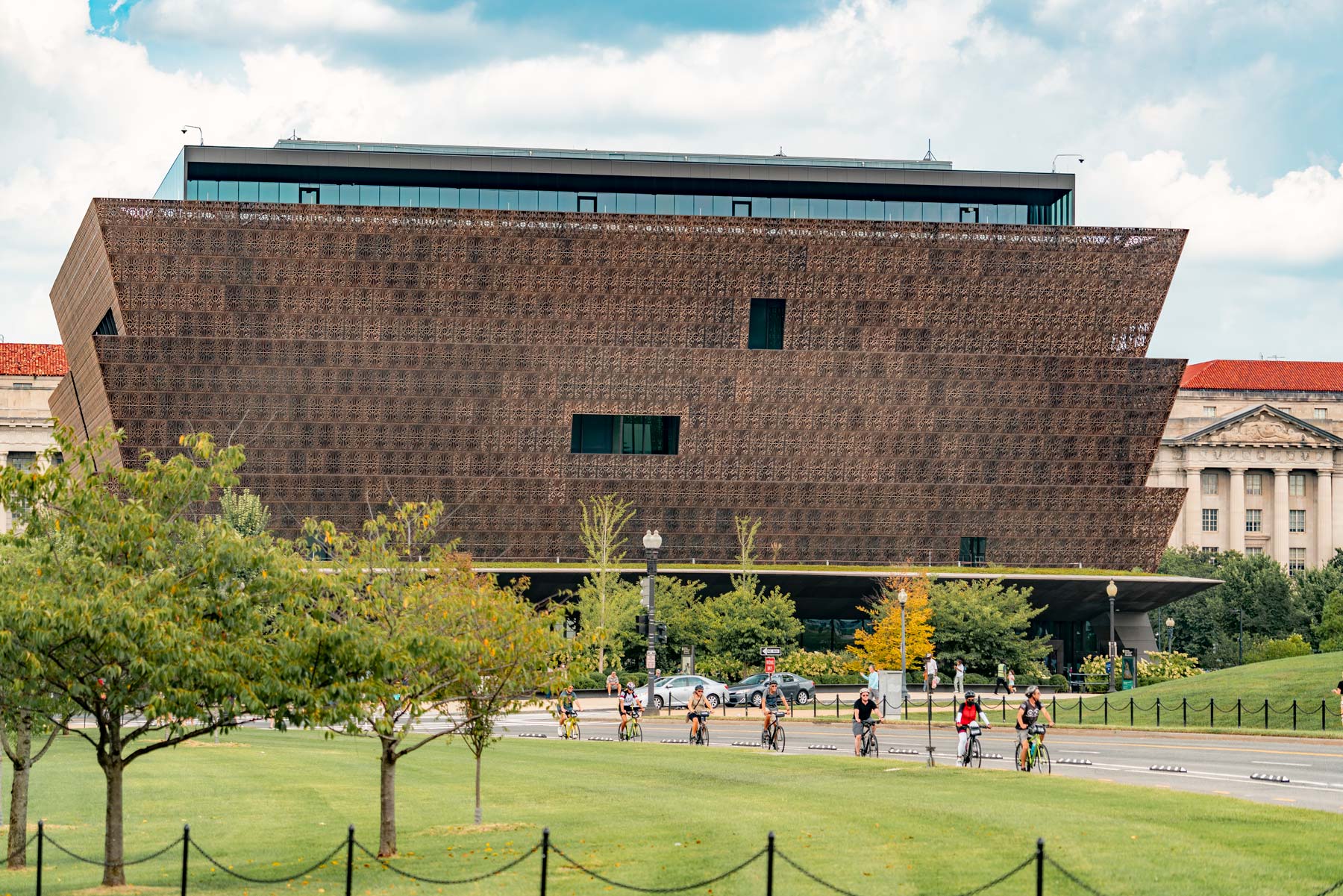
Take A Journey Like No Other
Its location and its innovative design represent the past, present, and future of the African American experience in ways tangible and symbolic. Visitors begin their voyage of discovery and understanding in the hold of a slave ship. It’s dark, cramped and uncomfortable.
And that discomfort continues as you have to navigate over two centuries of racial inequality. The Museum follows this principle in the sense that the building embraces its content—the American story told through the lens of African American history and culture.
You have to climb out of the darkness while surrounding by the disturbing events of an unfolding past. And you don’t actually come into the light, so to speak, until you have navigated through those exhibits documenting the Civil Rights battles of the 1950s and 1960s. and then you’re left to wonder about the future.
This building will sing for all of us.
-Lonnie G. Bunch, Founding Director of the National Museum of African American History and Culture
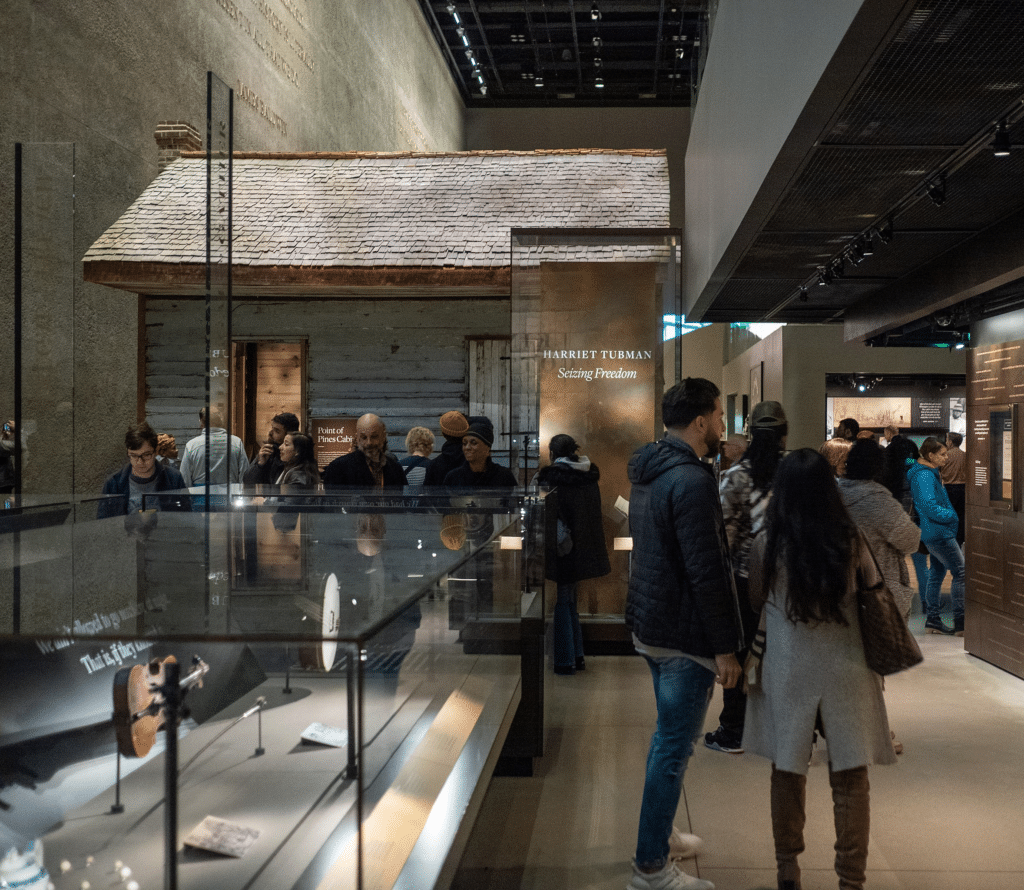
What You Will See
Highlights include:
- Harriet Tubman collection, including her hymnal (1876); lace shawl (c. 1897), given to her by Queen Victoria; and family photographs from her funeral
- Jim Crow railroad passenger car (1922)
- Chuck Berry’s red Cadillac convertible (c. 1973)
- Black Fashion Museum Collection (about 1,000 items)
- Tuskegee Airmen Trainer Plane, an open-cockpit PT-13 Stearman (c. 1944) used to prepare Tuskegee Airmen for World War II combat duty
- Works of art by Charles Alston, John Biggers, Elizabeth Catlett, Jacob Lawrence, Lorna Simpson, Romare Bearden, Archibald John Motley Jr., Henry O. Tanner and Frederick C. Flemister, Kehinde Wiley, Amy Sherald
- Emmett Till’s casket (1955)—the glass-topped casket that held the body of 14-year-old Emmett Till, whose murder in Mississippi helped galvanize the civil rights movement
- Slave cabin from Edisto Island, South Carolina (1853) (Source: Smithsonian)
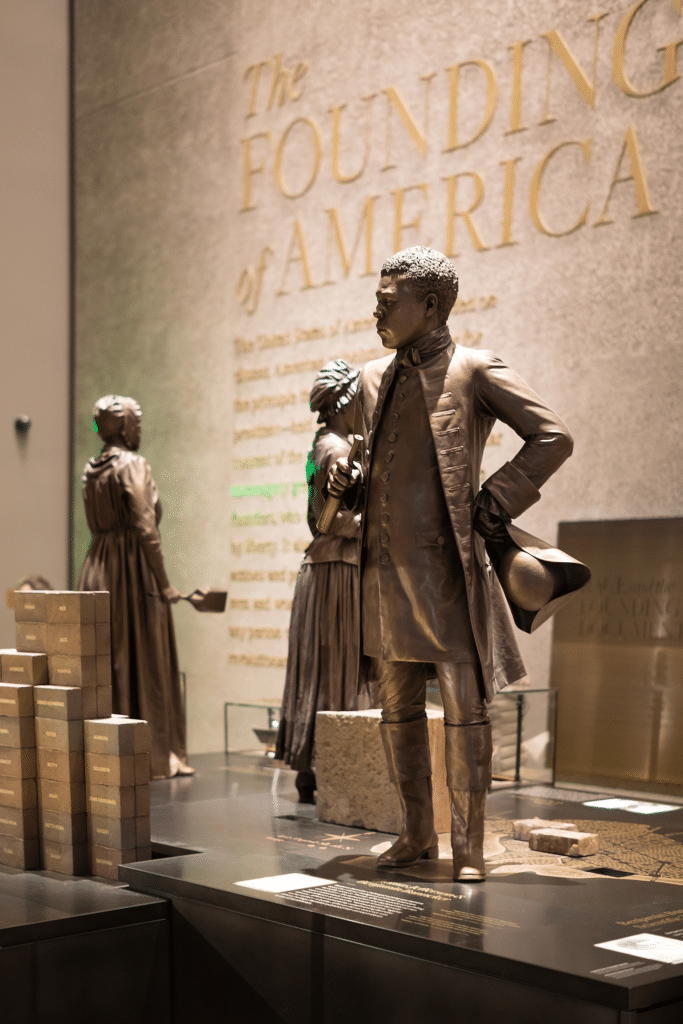
#1. Civil Rights Trail
Locations: 15 states across America
How does one select the #1 Best Black History Site in America?
At More Than Just Parks, instead of selecting one site we opted for many. Together, we believe that they truly constitute the #1 Best Black History Site in America.
The Civil Rights National Trail includes over 100 locations across 15 states. Its mission is to educate its visitors about the long and ongoing struggle of Black people to achieve equal rights.
Locations include the Martin Luther King, Jr. Memorial on the National Mall in Washington, D.C. and the Edmund Pettus Bridge, the location of a police confrontation during the Selma, Alabama marches.
While I can’t review all of these incredible places in this article, I would like to share two of my favorites with you.

Civil Rights Trail: Selma To Montgomery National Historic Trail
Location: Selma, Alabama
As a retired history teacher one of the best parts about retirement is now I have the time to jump into my car and visit the places I spent so much time talking about for so many years. The Selma To Montgomery National Historic Trail is one such place.
On 25 March 1965, Martin Luther King, Jr. led thousands of nonviolent demonstrators to the steps of the capitol in Montgomery, Alabama, after a 5-day, 54-mile march from Selma, Alabama.
Those brave marchers had already made history on March 7, 1965. The day would come to be known as “Bloody Sunday.”
On that day, 25-year-old activist John Lewis led over 600 marchers across the Edmund Pettus Bridge in Selma, Alabama, and into the history pages.
Bloody Sunday
March 7, 1965 preceded the historic march. It came to be known as “Bloody Sunday.”
On that fateful day, 25-year-old activist John Lewis led over 600 marchers across the Edmund Pettus Bridge in Selma, Alabama, and into the history pages.
After a two-minute warning was announced, the troops advanced, wielding clubs, bullwhips, and tear gas.
John Lewis, who suffered a skull fracture, was one of fifty-eight people treated for injuries at the local hospital.
A horrified nation watched the carnage unfold on national television.
Lewis: I was hit on my head right here.
-From John Lewis congressional testimony on the events of bloody sunday
Hall: What were you hit with?
Lewis: I was hit with a billy club, and I saw the State Trooper that hit me.
Hall: How many times were you hit?
Lewis: I was hit twice, once when I was lying down and was attempting to get up.
Hall: Do we understand you to say were hit . . . and then attempted to get up and were hit—and was hit again.
Lewis: Right.
“Their Cause Must Be Our Cause Too”
State and local lawmen attacked them with clubs and tear gas and drove them back into Selma. John Lewis suffered a skull fracture. Lewis was one of fifty-eight people treated for injuries at the local hospital. Television coverage of “Bloody Sunday,” triggered national outrage.
On 15th, March President Lyndon Johnson addressed Congress, identifying himself with the demonstrators in Selma in a televised address: “Their cause must be our cause too. Because it is not just Negroes, but really it is all of us, who must overcome the crippling legacy of bigotry and injustice. And we shall overcome.”
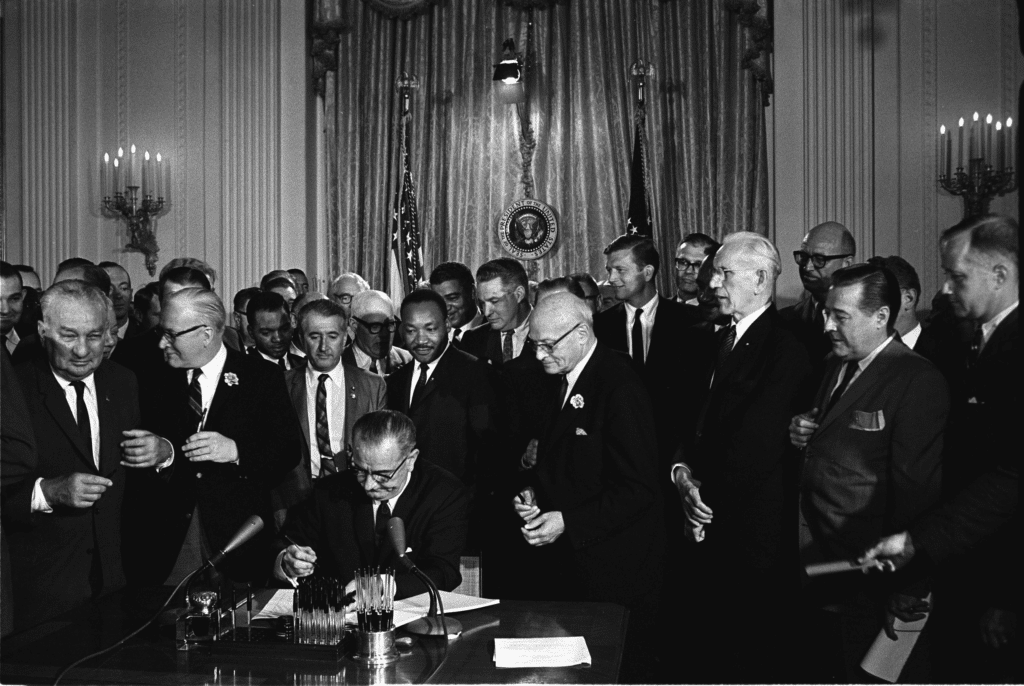
The Marchers Kept Marching Towards Montgomery
The day after Johnson’s speech, Selma demonstrators submitted a detailed march plan to Judge Johnson. He approved the demonstration and enjoined Alabama’s Governor George Wallace and local law enforcement from harassing or threatening marchers.
Twenty five thousand demonstrators joined Dr. Martin Luther King, Jr., on the steps of the state capitol in Montgomery, Alabama.
It was there that he said, “The end we seek is a society at peace with itself, a society that can live with its conscience. And that will be a day not of the white man, not of the black man. That will be the day of man as man.”

Top right: Marchers carrying banner “We march with Selma!” on street in Harlem, New York City, New York in 1965
Bottom left: Participants in the Selma to Montgomery march in Alabama during 1965 Bottom right: Dr. Martin Luther King, Dr. Ralph David Abernathy, their families, and others leading the Selma to Montgomery march in 1965 (Courtesy of Wikimedia Commons)
“The time is always right to do what is right.”
-Dr. martin Luther king, jr.
Retrace The Footsteps Of Progress Along The Selma To Montgomery Trail
Visitors are encouraged to drive the same route taken by Dr. King and thousands of his followers. Along the way, stop off at the Selma Interpretive Center serves as the Welcome Center to the trail located at the foot of the Edmund Pettus Bridge. The Interpretive Center offers an interpretive exhibit and bookstore.
Other points of historical interest while in Selma include: Brown Chapel A.M.E. Church, First Baptist Church, George Washington Carver Homes and wayside exhibits.
You can also visit the National Voting Rights Museum & Park (privately owned), Slavery & Civil War Museum, Old Depot Museum, Smitherman Museum and, of course, the Edmund Pettus Bridge.
Once you get to Montgomery, there’s the Rosa Parks Museum, Dexter Avenue King Memorial Baptist Church, Alabama State Capitol and the Southern Law Poverty Center. So much history, so many amazing places. So, what are you waiting for?

Civil Rights Trail: Birmingham Civil Rights National Monument
Come to Alabama and visit the incredible historic sites which commemorate our nation’s long march towards freedom.
When you visit these places and imagine the struggles of the people who risked so much for the rights we take for granted today it gives you a real understanding of their heroism.
You’ll truly appreciate the words and the courage demonstrated by thousands of African-Americans in the 1950s and 1960s who battled segregation in American society.
And while you’re there, be sure to visit the Birmingham Civil Rights National Monument.
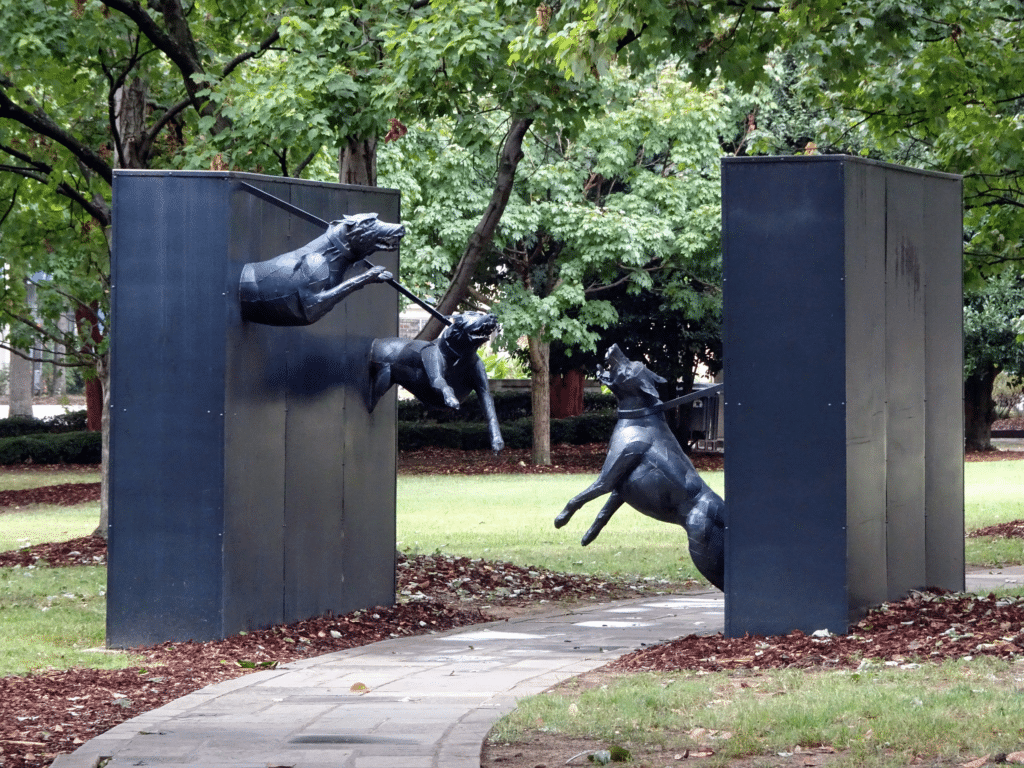
The Struggle For Civil Rights
The dramatic images of violent aggression against civil rights protesters in Birmingham, Alabama were vivid examples of segregation and racial injustice in America.
The Birmingham Civil Rights National Monument examines the struggle for racial equality. It encompasses roughly four city blocks in downtown Birmingham, Alabama. The National Monument includes the A.G. Gaston Motel, which served as the headquarters for the Birmingham campaign.
It was here from April through May of 1963 that the leaders of the civil rights movement, including Reverend Dr. Martin Luther King, Jr., made the critical decisions about their non-violent campaign to overturn Birmingham’s segregation laws and practices.
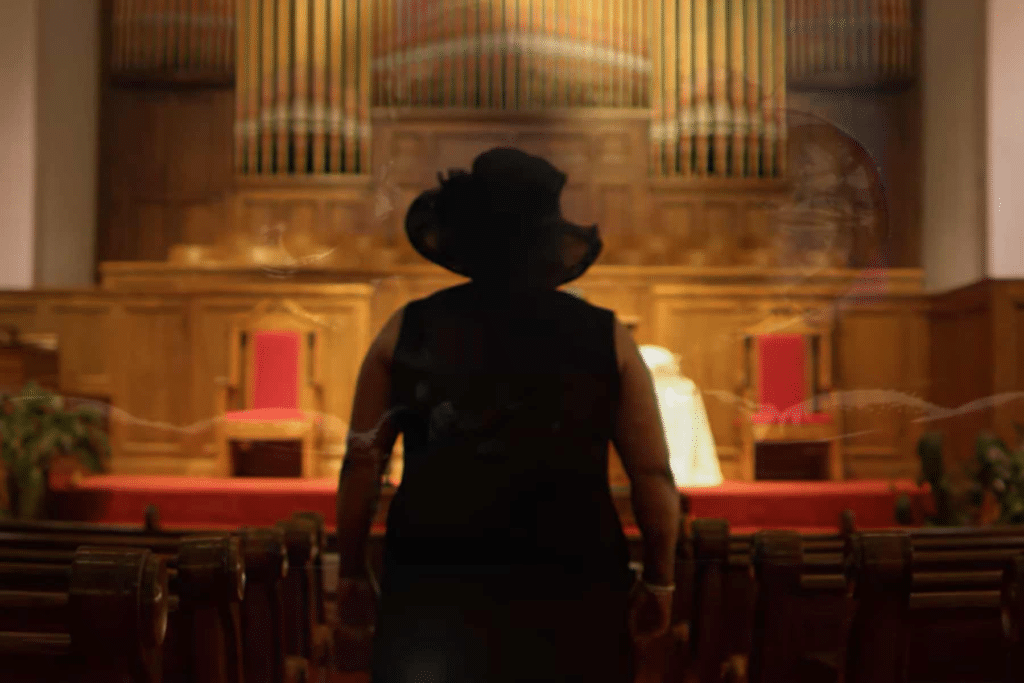
Important landmarks worth visiting include the following
- The 16th Street Baptist Church target of September 1963 bombing that killed four young girls who were preparing for Sunday school.
- Kelly Ingram Park where protesters, including many children, were violently disrupted by police dogs and powerful water cannons. Images of the brutal police response to peaceful protesters spread across the country through the news media, shocking the conscience of the nation and the world.
- The 4th Avenue Historic District sites listed in the National Register of Historic Places. It was the retail and entertainment center for black-owned businesses serving African American customers during Birmingham’s extended period of forced segregation.
- Bethel Baptist Church, located six miles north of the city center, was the headquarters of the Alabama Christian Movement for Human Rights and was bombed three times – in 1956, 1958 and 1962. (Source: NPS)

“If you see something that is not right, not fair, not just, you have a moral obligation to do something about it.”
-John Lewis
List Of The Best Black History Sites In America
- Civil Rights Trail
- National Museum Of African American History & Culture
- Martin Luther King Jr. National Historic Park
- Rosa Parks Museum
- National Voting Rights Museum and Institute
- Mississippi Civil Rights Museum and Museum of Mississippi History
- Frederick Douglass National Historic Site
- Martin Luther King Jr. Memorial
- The National Memorial for Peace and Justice
- The Legacy Museum: From Enslavement to Mass Incarceration
- National Underground Railroad Freedom Center
- Tuskegee Airmen National Historic Site
- Negro Leagues Baseball Museum
- Tuskegee Institute National Historic Site
- Charles Young Buffalo Soldiers National Monument
- Nicodemus National Historic Site
- Beale Street Historic District
- Medgar and Myrlie Evers Home National Monument
- Museum of the African Diaspora
- 1921 Black Wall Street Memorial
About the Folks Behind More Than Just Parks

You should probably know that we don’t just make this stuff up out of thin air. My sons have spent their entire adult lives exploring and filming America’s national parks and public lands.
As for me, I’m a retired lifelong educator and a proud dad of these two wonderful guys who are hopelessly obsessed with the national parks. I taught history for over a quarter of a century. Now I enjoy researching and writing articles for the More Than Just Parks website. I’m always on the hunt for topics where nature and history intersect so please feel free to share any ideas that you might have with me.
We’ve worked with the National Park Service, the Department of Interior, and the U.S. Forest Service for years creating films on important places and issues. Our work has been featured in leading publications all over the world and even some people outside of our immediate family call us experts on the national parks.
Meet The Parks Brothers
We’re Jim Pattiz and Will Pattiz, collectively known as the Pattiz Brothers (and sometimes the Parks Brothers) and we absolutely LOVE the national parks.
Our goal here at More Than Just Parks is to share the beauty of America’s national parks and public lands through stunning short films in an effort to get Americans and the world to see the true value in land conservation.
We hope you’ll follow our journey through the parks and help us to keep them the incredible places that they are. If you’re interested in joining the adventure then sign up below!
To Learn More About Black History:
- Parting the Waters : America in the King Years 1954-63 by Taylor Branch.
- Pillar of Fire : America in the King Years 1963-65 by Taylor Branch.
- At Canaan’s Edge: America in the King Years 1965-68 by Taylor Branch.
- Eyes on the Prize: America’s Civil Rights Years, 1954-1965 by Juan Williams & Julian Bond.
- Slavery by Another Name: The Re-Enslavement of Black Americans from the Civil War to World War II by Douglas A. Blackmon.
- The Tuskegee Airmen: The History and Legacy of America’s First Black Fighter Pilots in World War II by Charles Rivers Editors.
- The Autobiography of Martin Luther King, Jr. by Claborne Carson.
- Benjamin O. Davis, Jr. American: An Autobiography by Benjamin O. Davis, Jr.
- A Testament of Hope: The Essential Writings and Speeches of Martin Luther King, Jr.
- Three African-American Classics: Up from Slavery, The Souls of Black Folk and Narrative of the Life of Frederick Douglass by Booker T. Washington, W.E.B. DuBois & Frederick Douglass
- Frederick Douglass: Prophet of Freedom by David W. Blight.
- Rosa Parks: My Story by Rosa Parks & Jim Haskins.
- The Autobiography Of Medgar Evers: A Hero’s Life and Legacy Revealed Through His Writings, Letters, and Speeches by Myrlie Evers-Williams.
- His Truth Is Marching On: John Lewis and the Power of Hope by Jon Meachum.
- The Burning: Massacre, Destruction, and the Tulsa Race Riot of 1921 by Tim Madigan.
- Black Wall Street: From Riot to Renaissance in Tulsa’s Historic Greenwood District by Hannibal B. Johnson.
- The Autobiography of Malcolm X: As Told to Alex Haley by Malcom X & Alex Haley.
- Harriet, The Moses of Her People: A Biography of Harriet Tubman by Sarah Hopkins Bradford.
- A Complete History of the Negro Leagues: 1884 to 1955 by Mark Ribowsky.
- Shades of Glory: The Negro Leagues and the Story of African-American Baseball by Lawrence D. Hogan.
- Jackie Robinson: A Biography by Arnold Rampersad.
- Why We Can’t Wait by Dr. Martin Luther King, Jr.
- Where Do We Go from Here: Chaos or Community? by Dr. Martin Luther King, Jr.
- The Great Book of Black Heroes: 30 Fearless and Inspirational Black Men and Women that Changed History by Bill O’Neill.
- African-American Musicians That Changed Music Forever: 100 Legendary Artist That Created the Soundtrack of our Lives by Michael A. Carson & Matthew A. Carson.
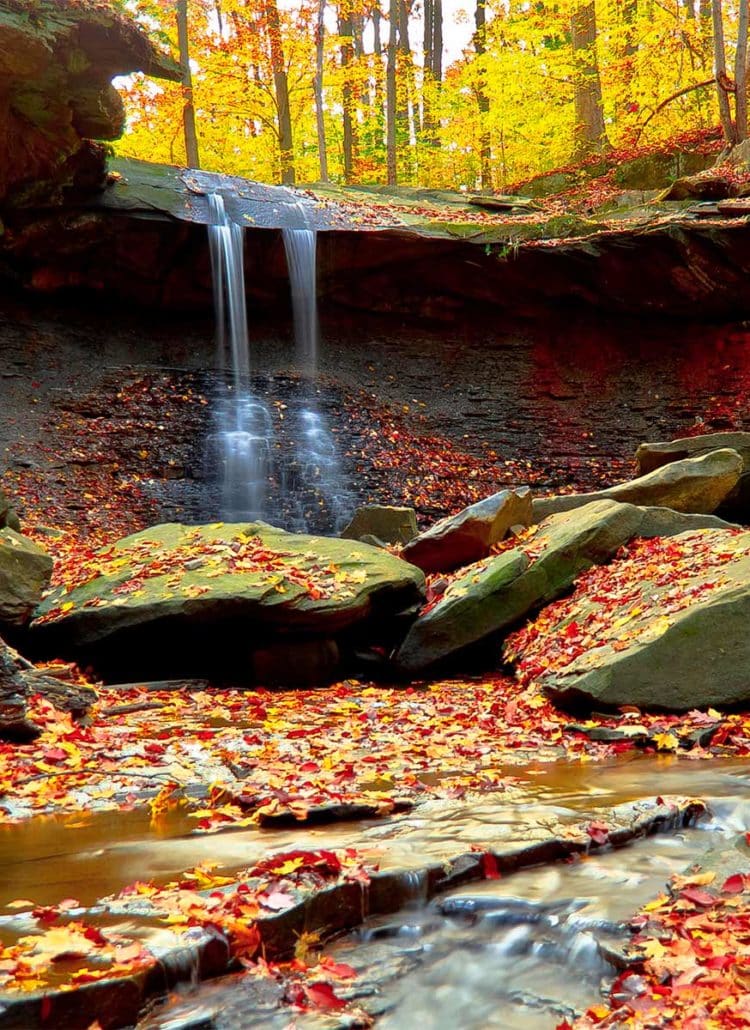

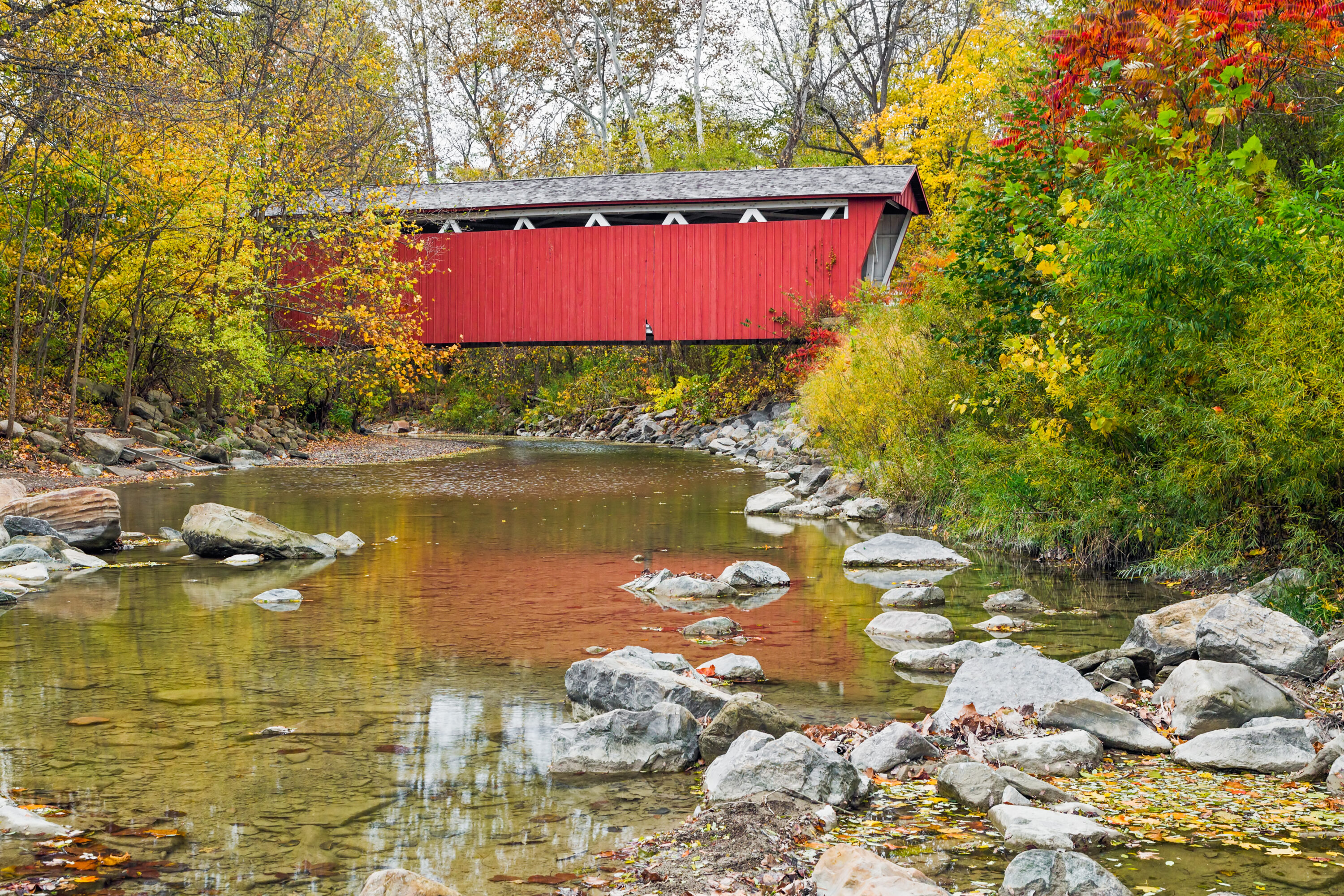
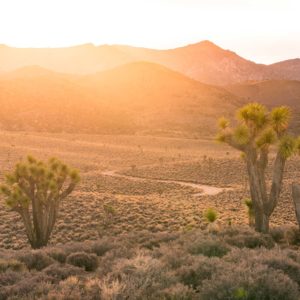

Leave a Reply